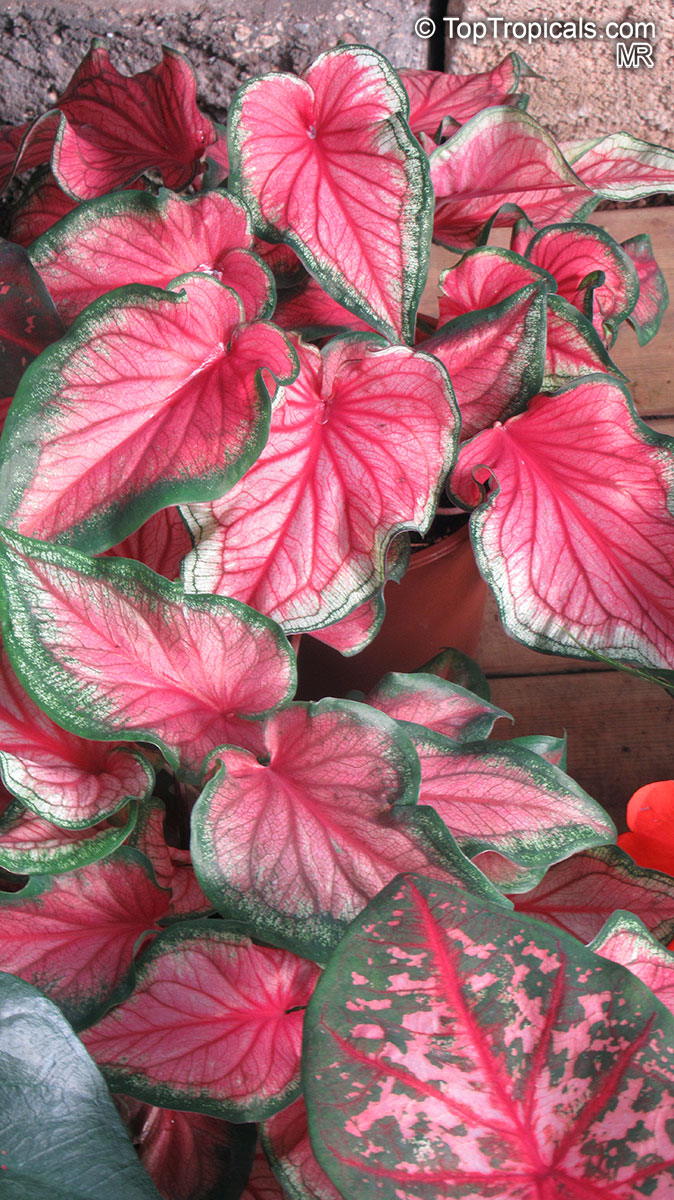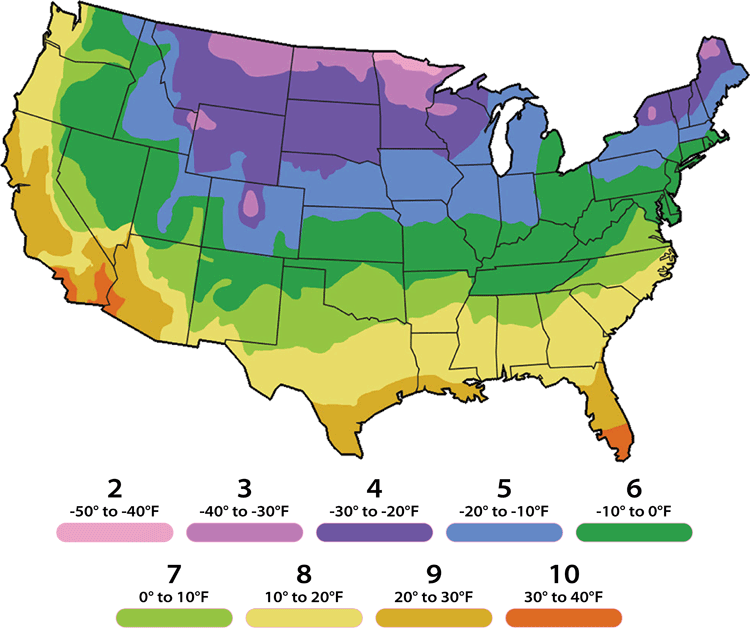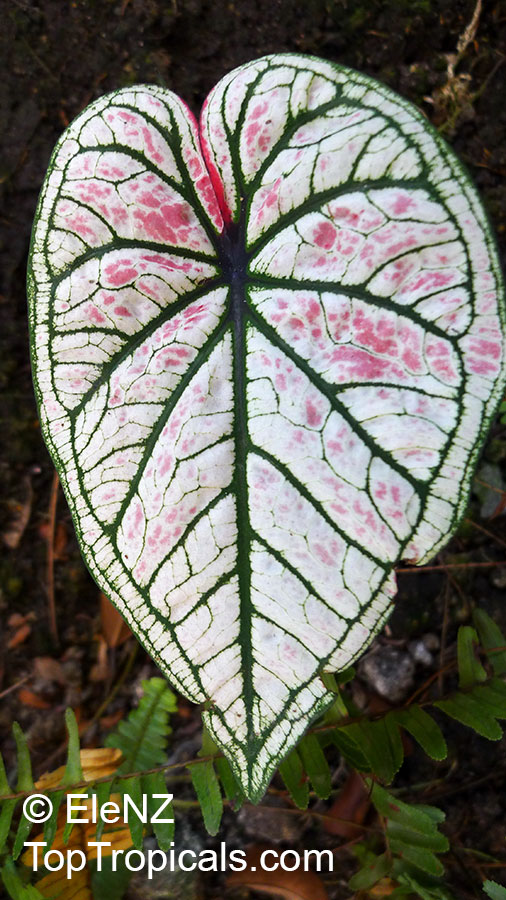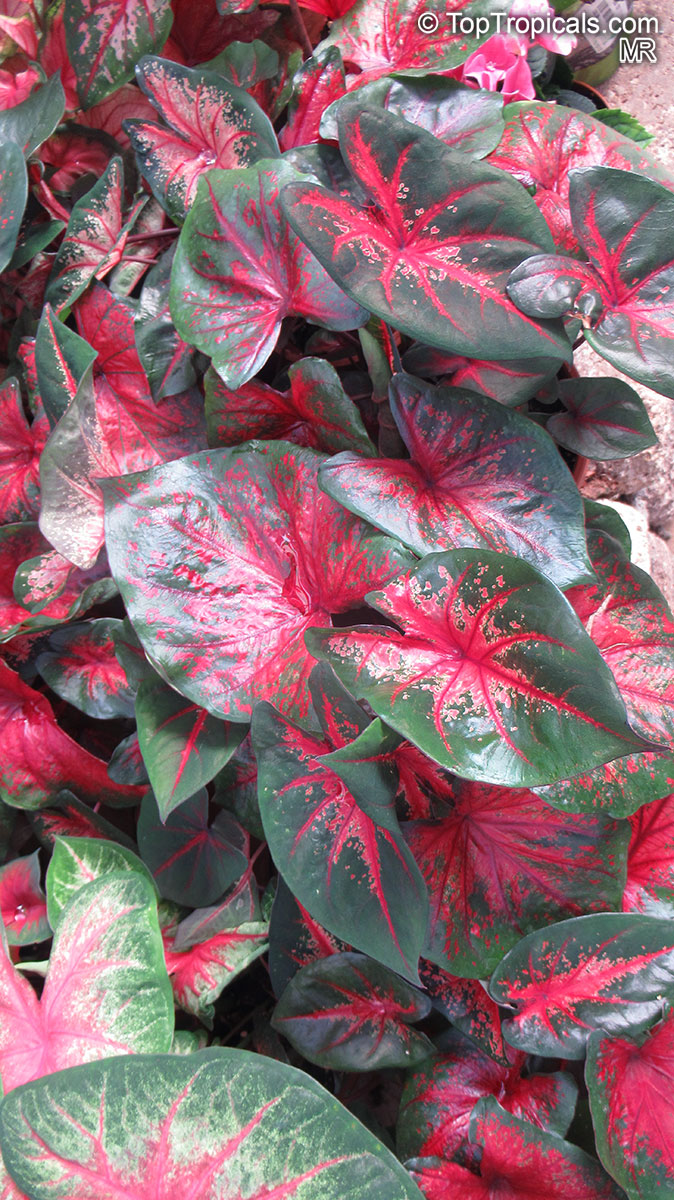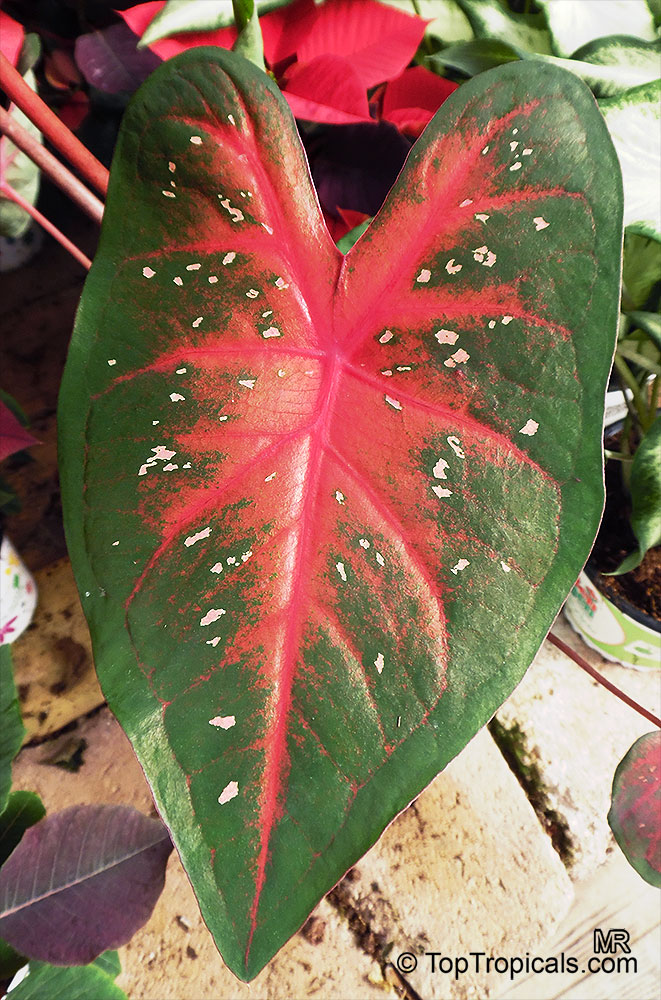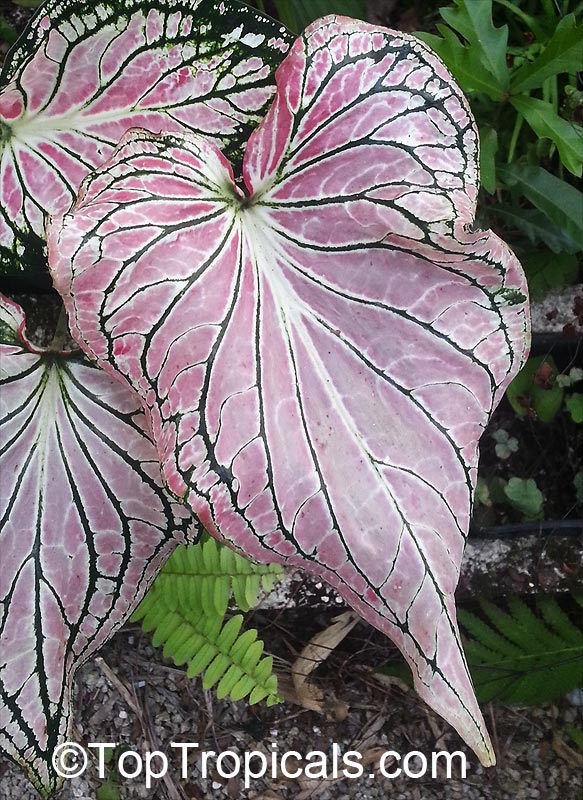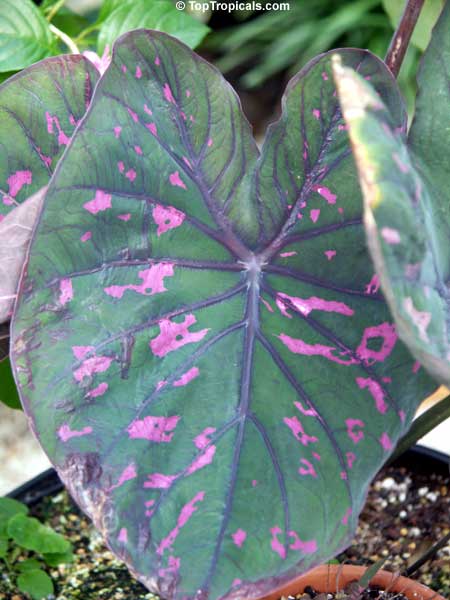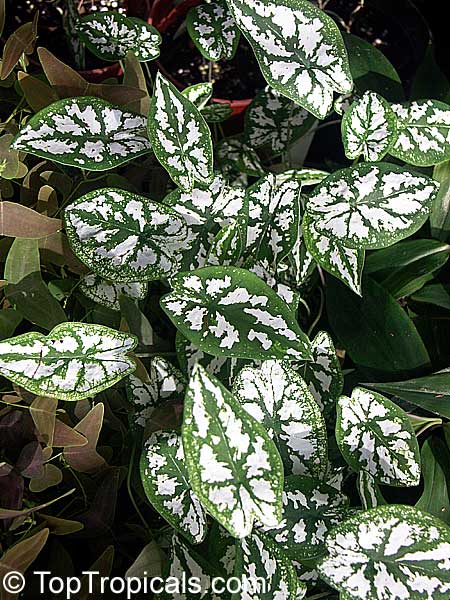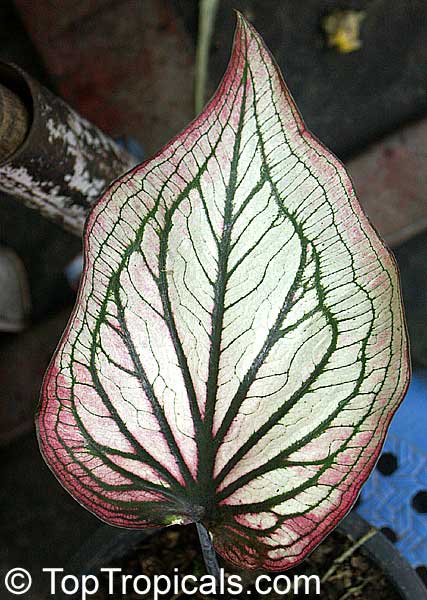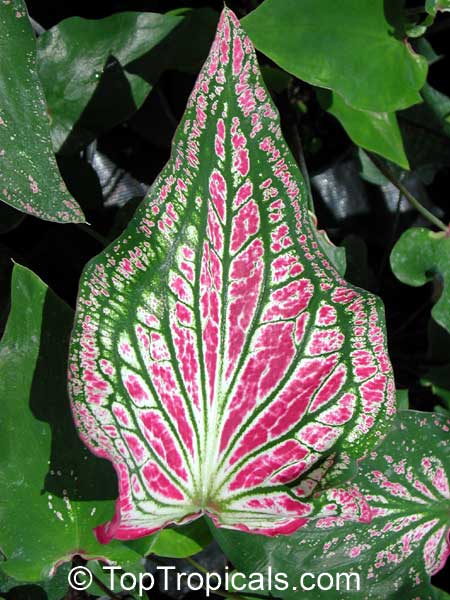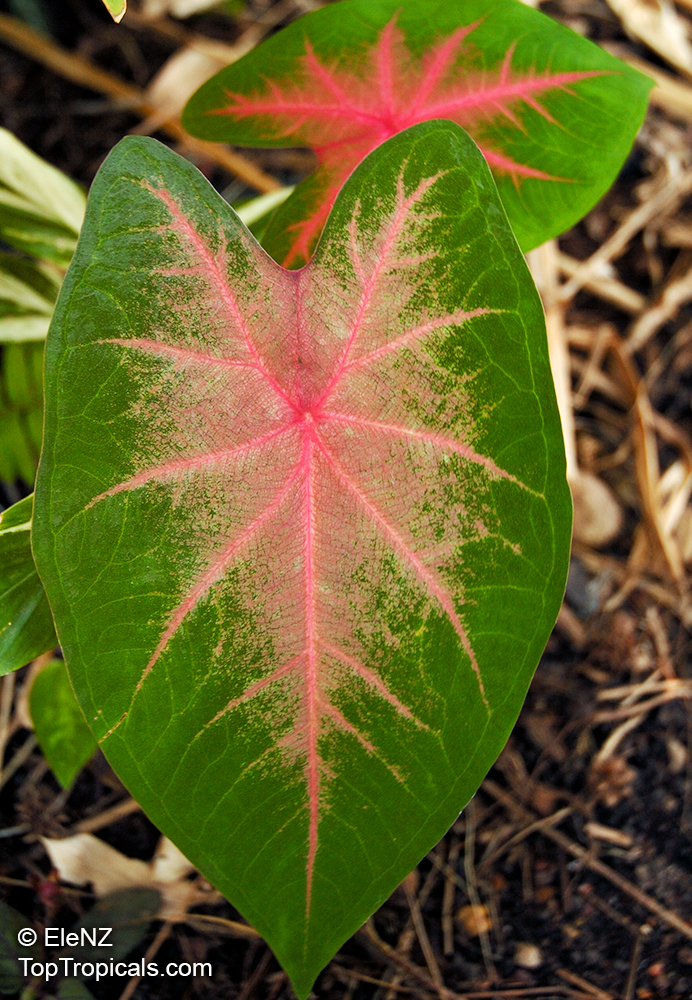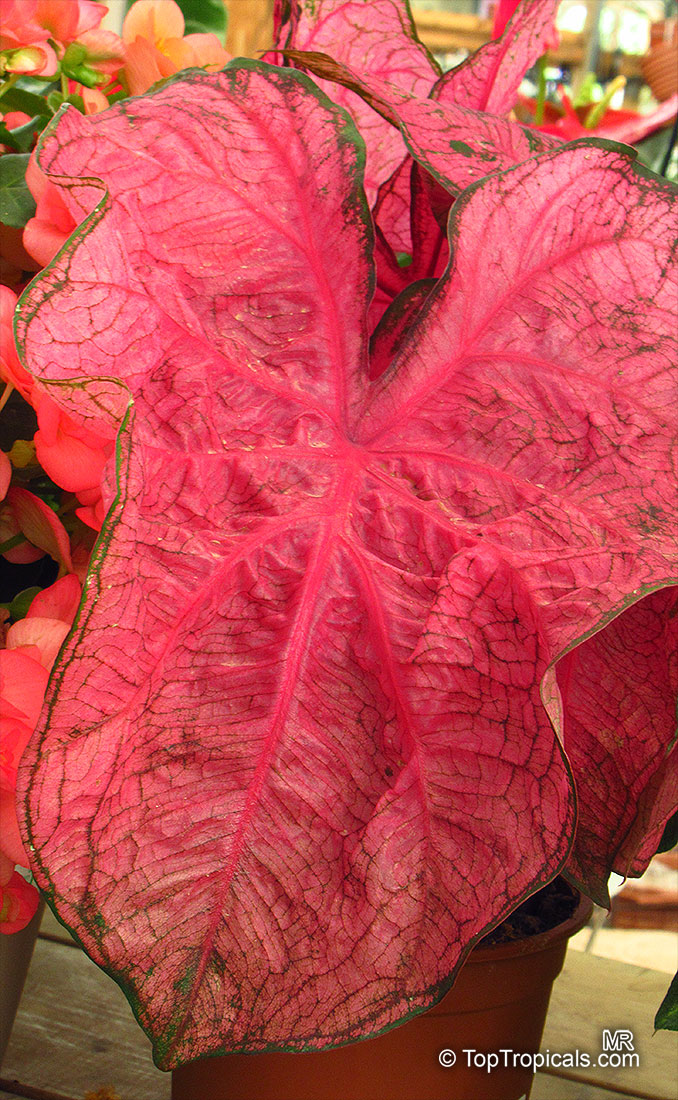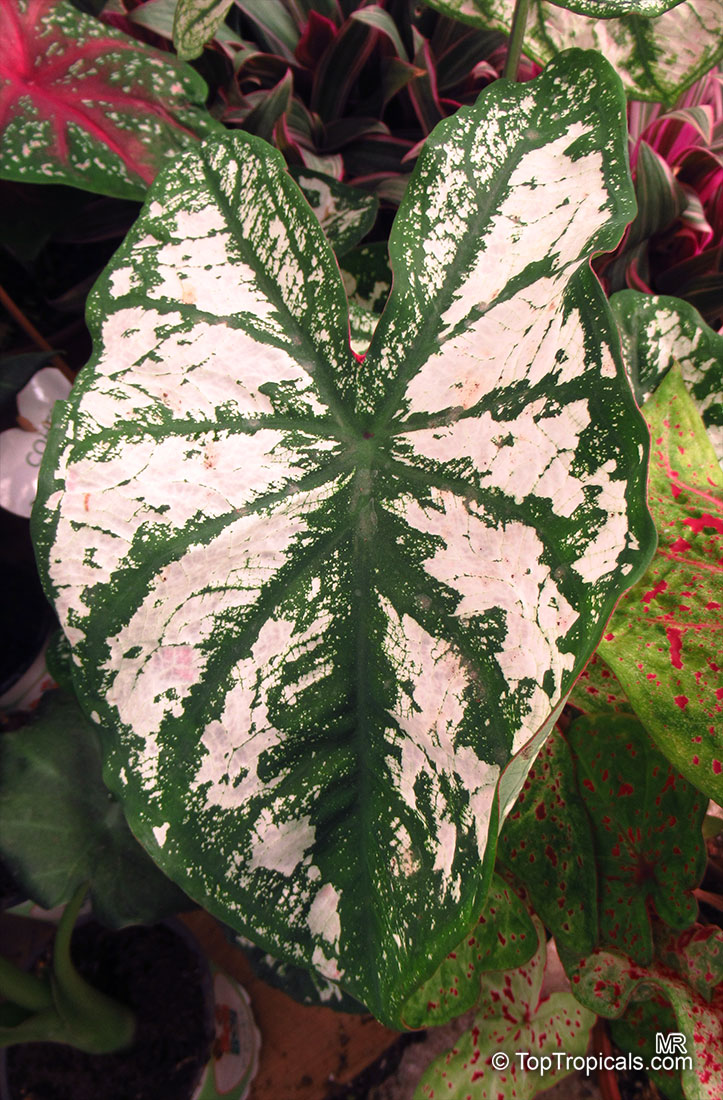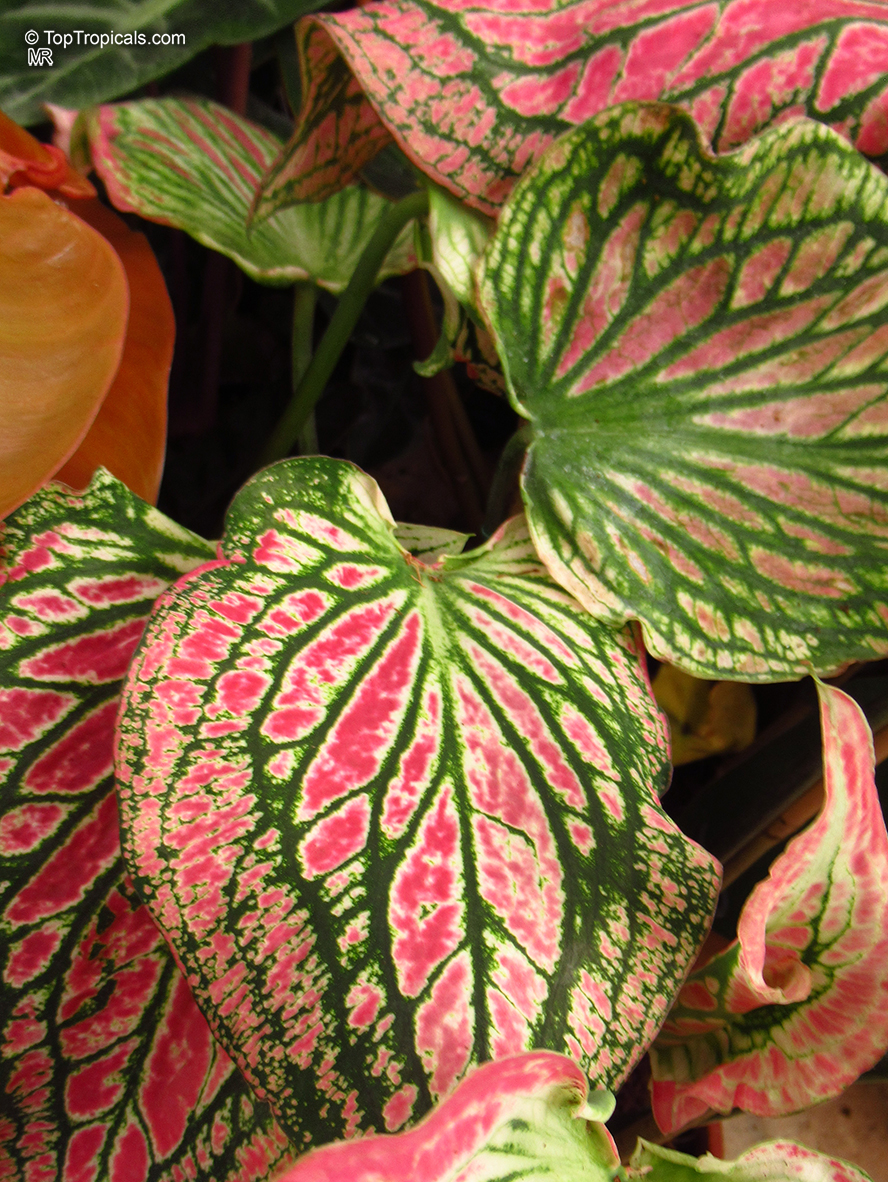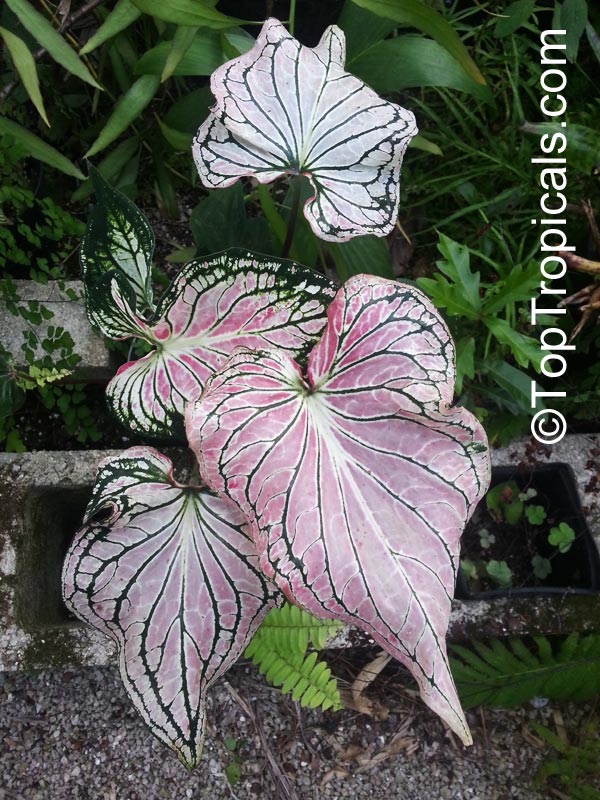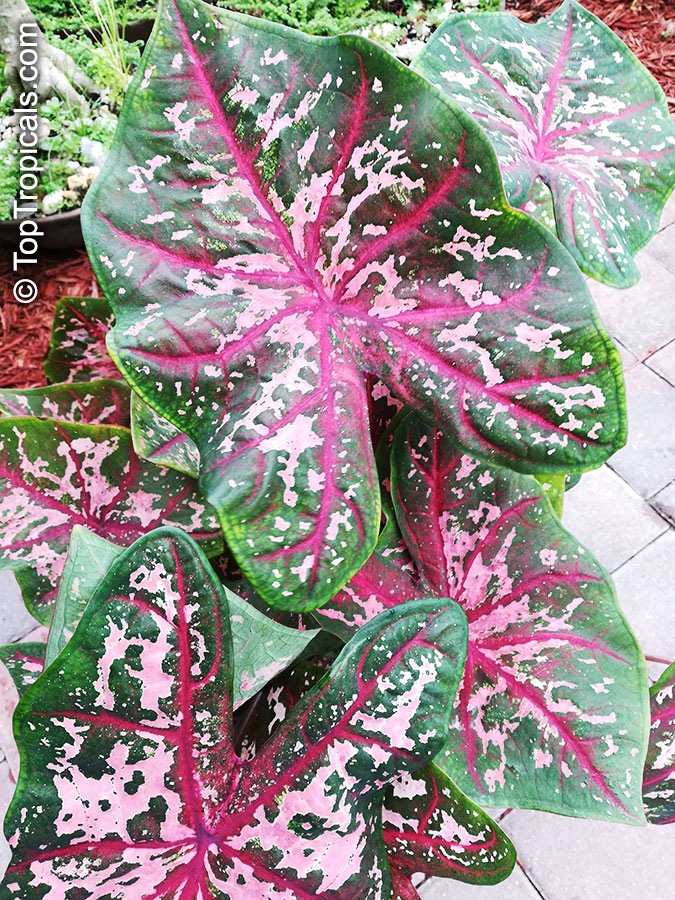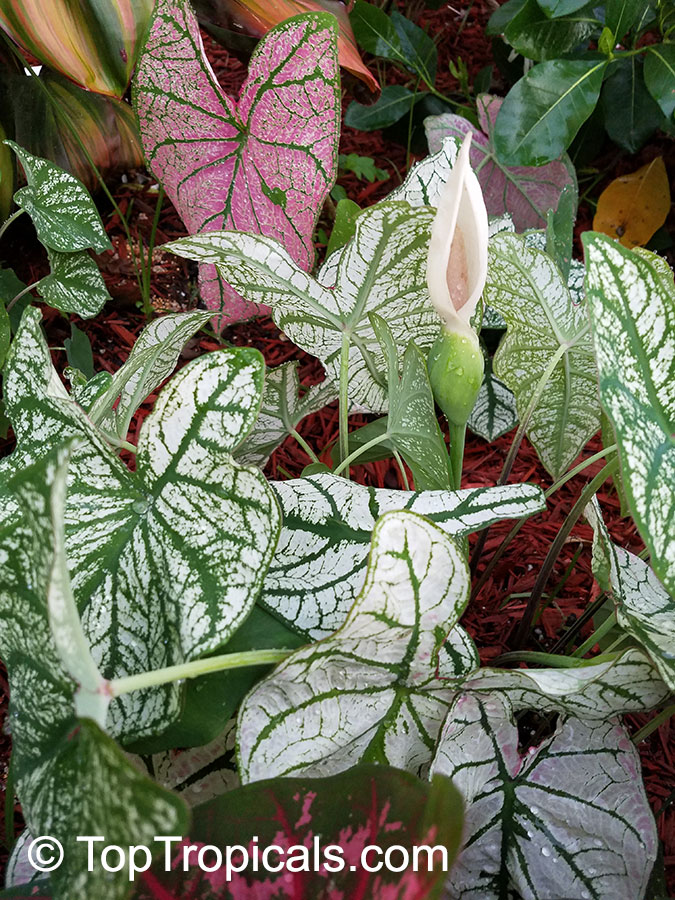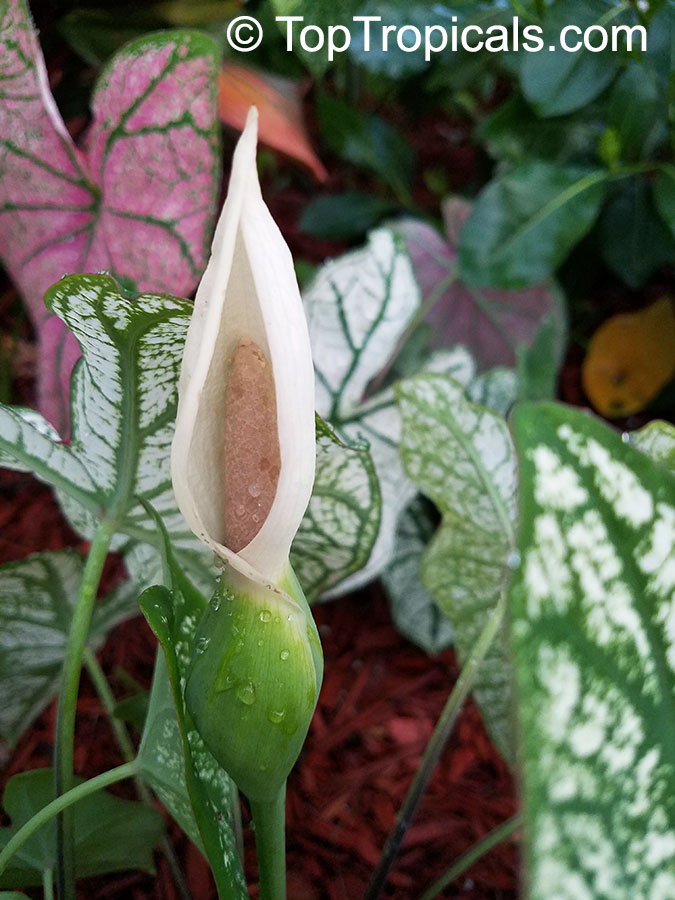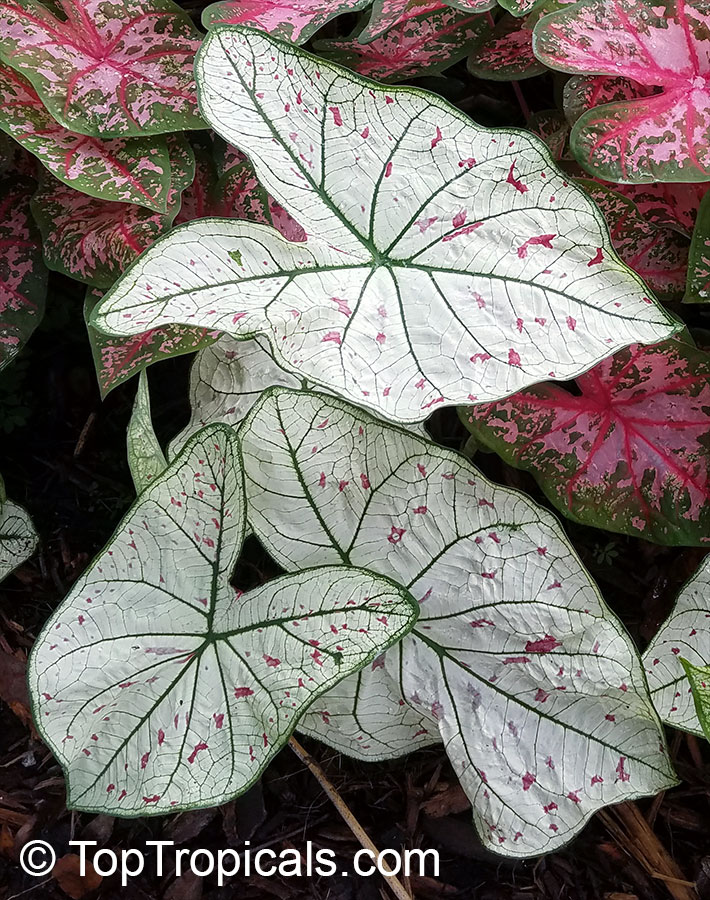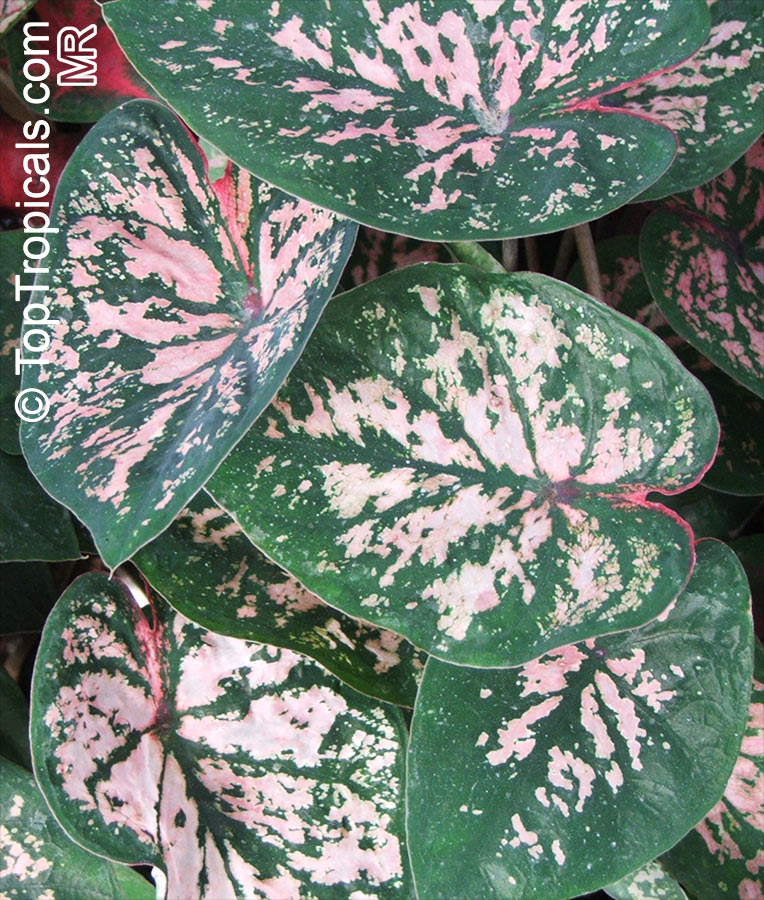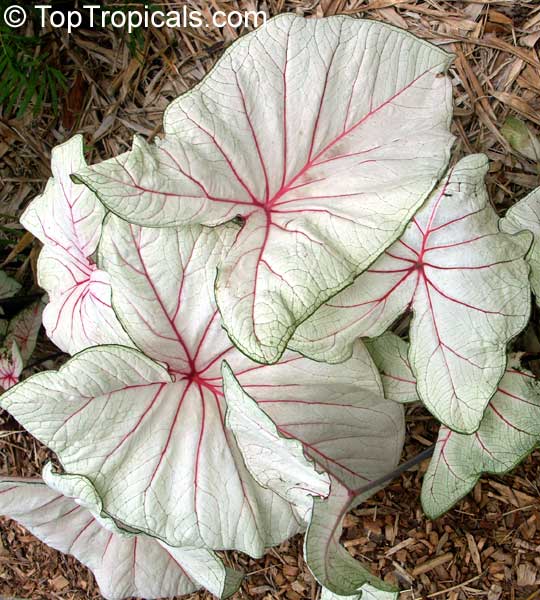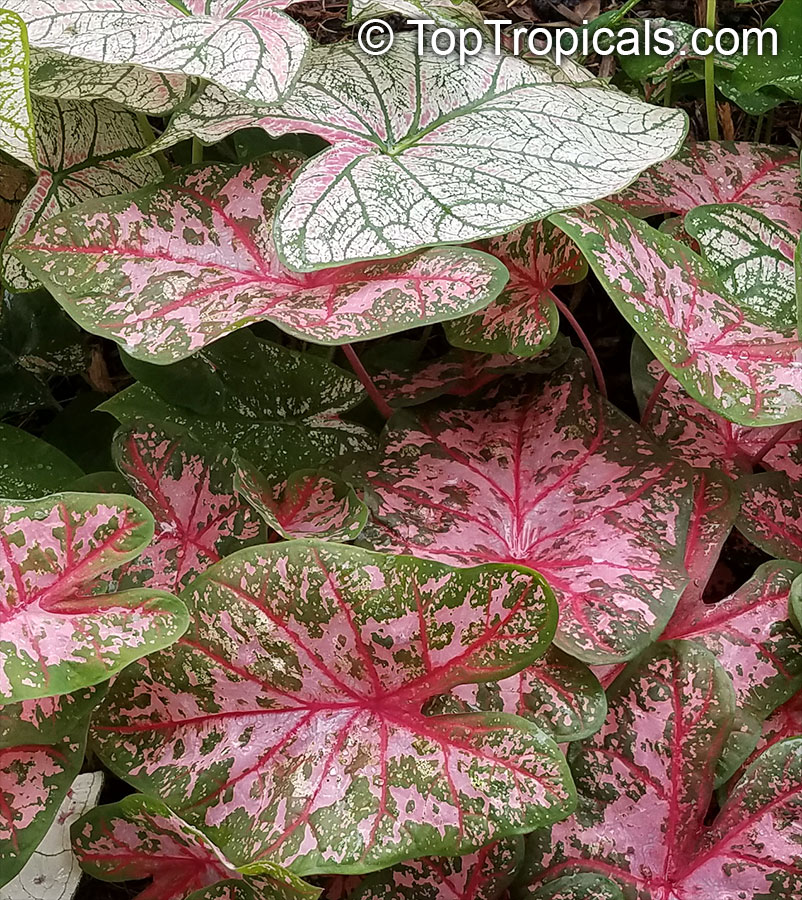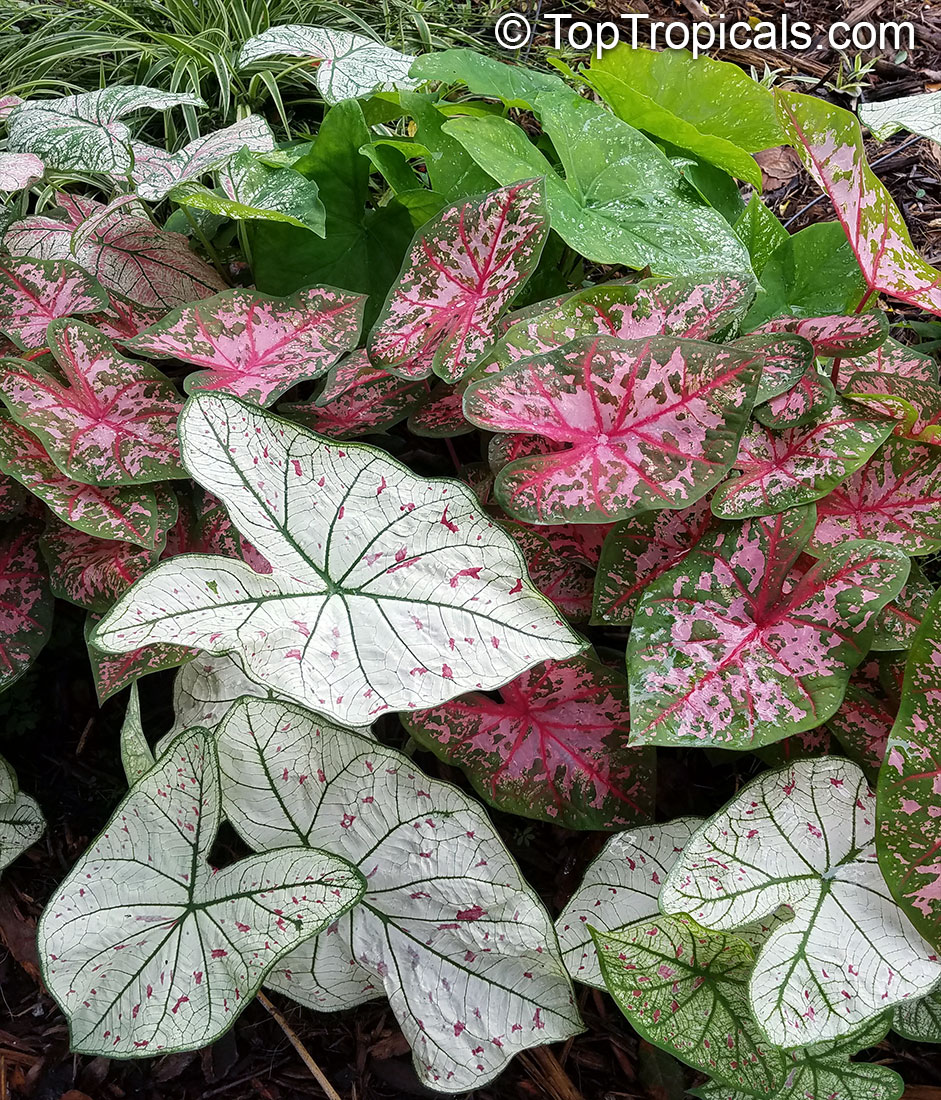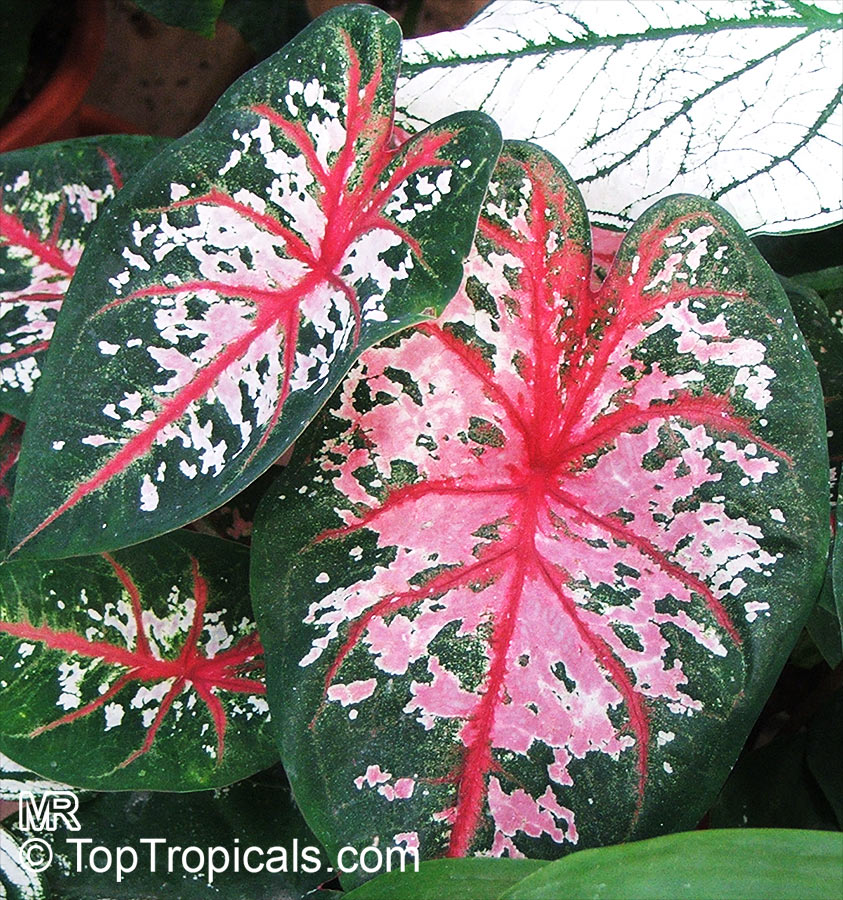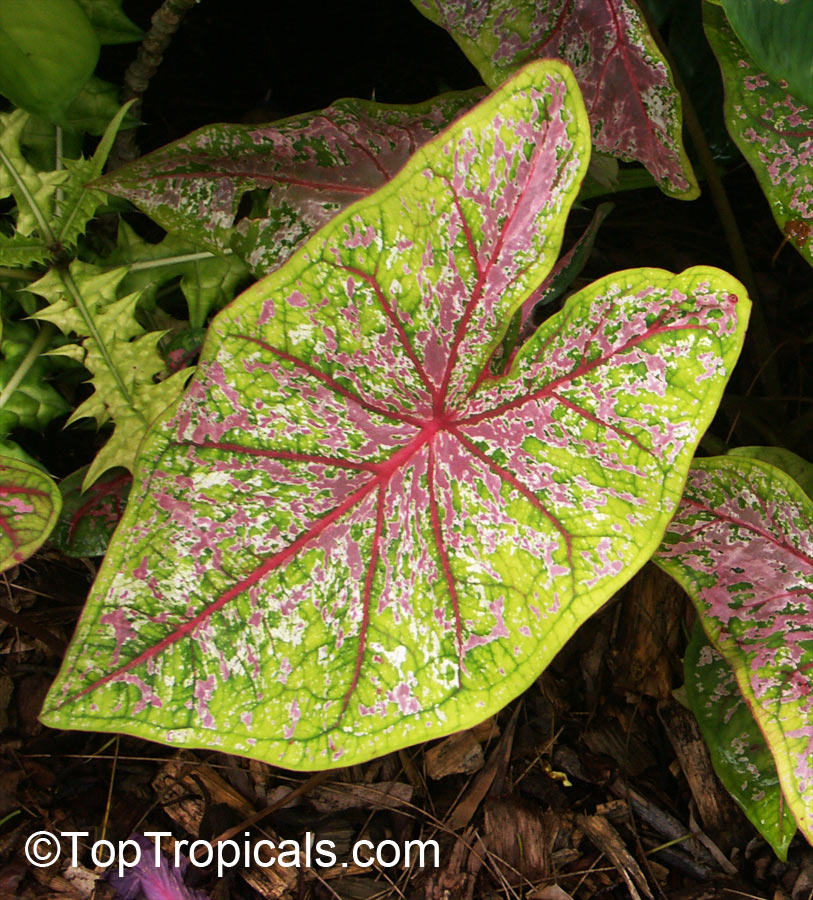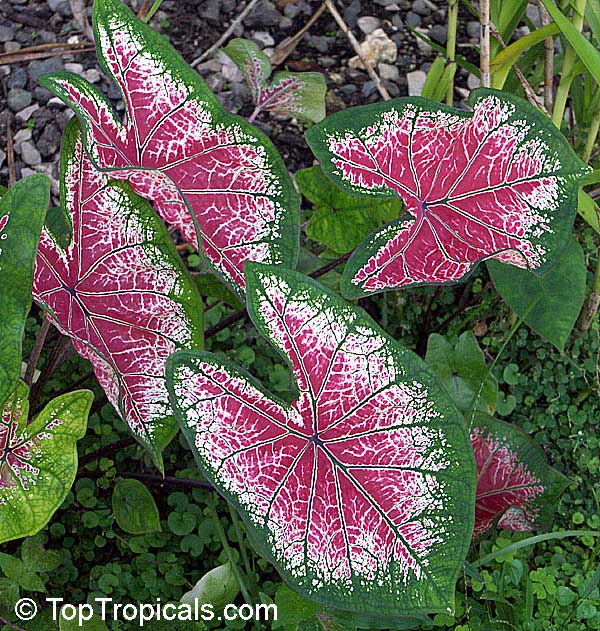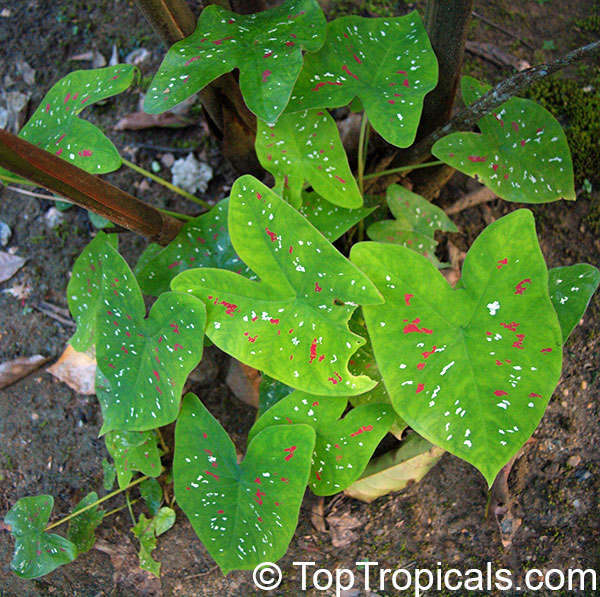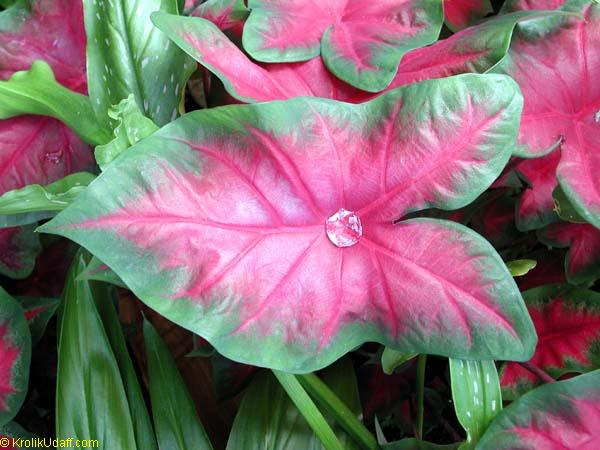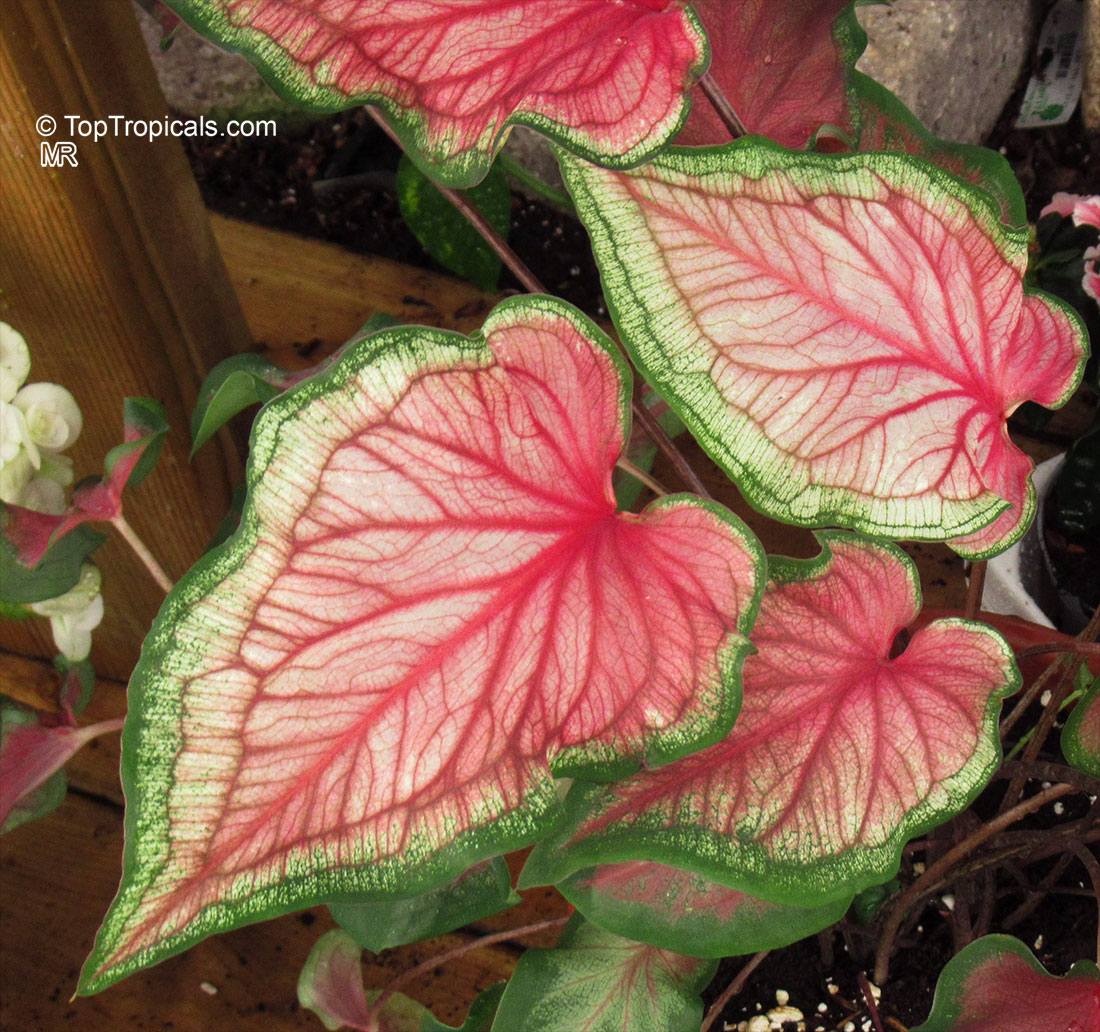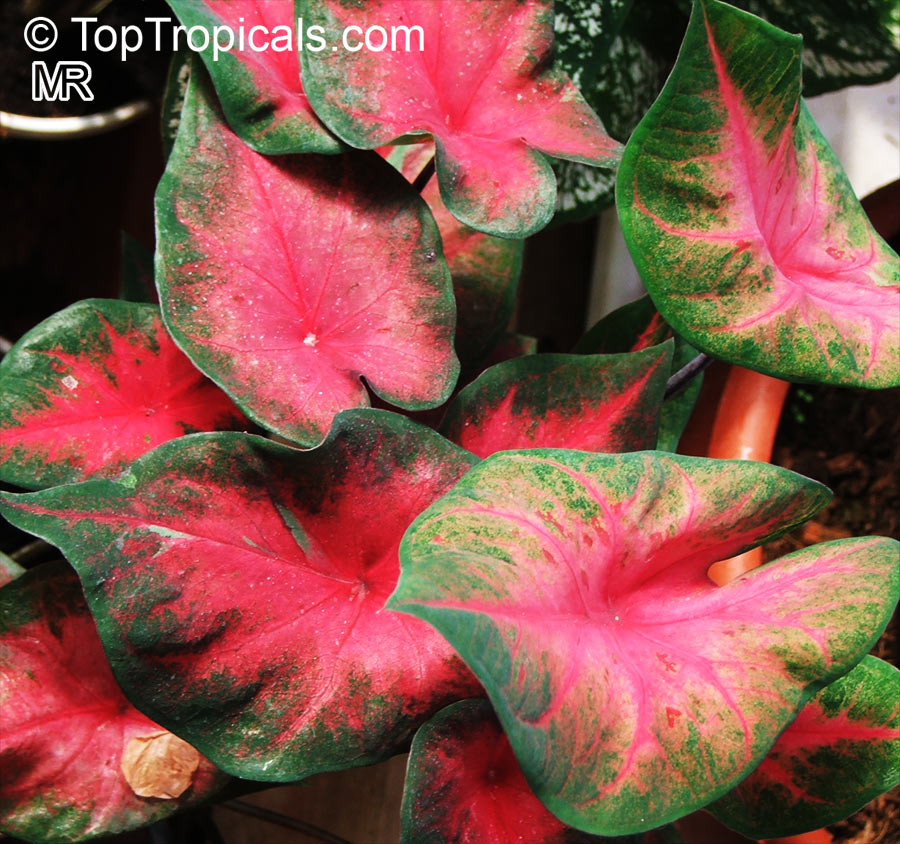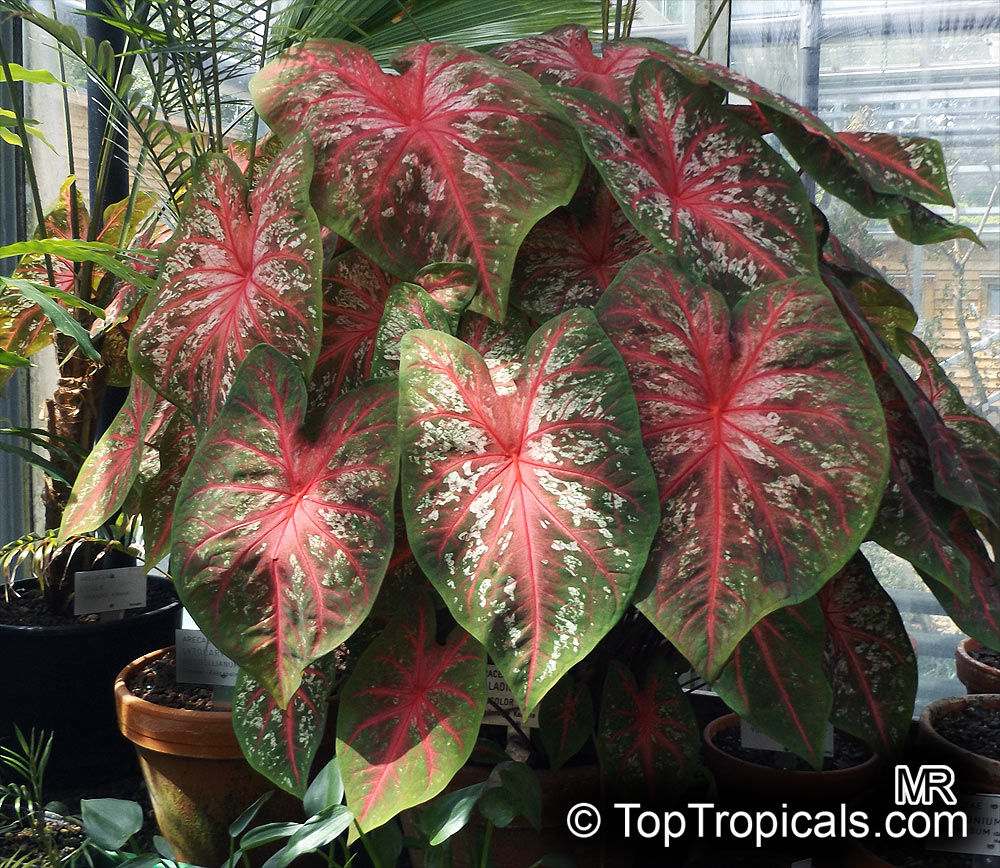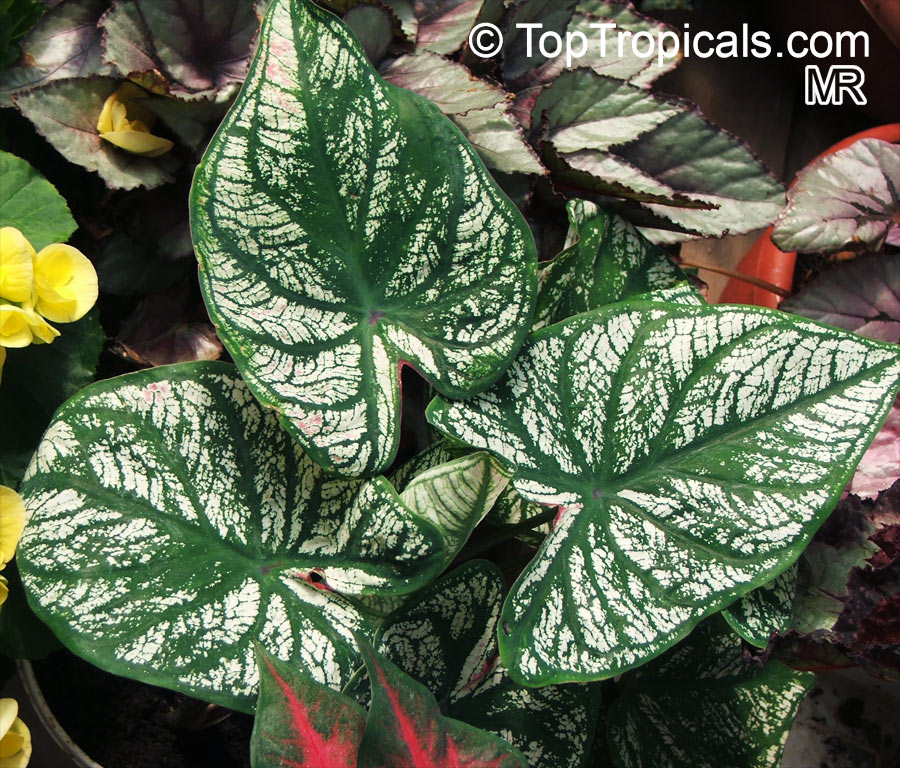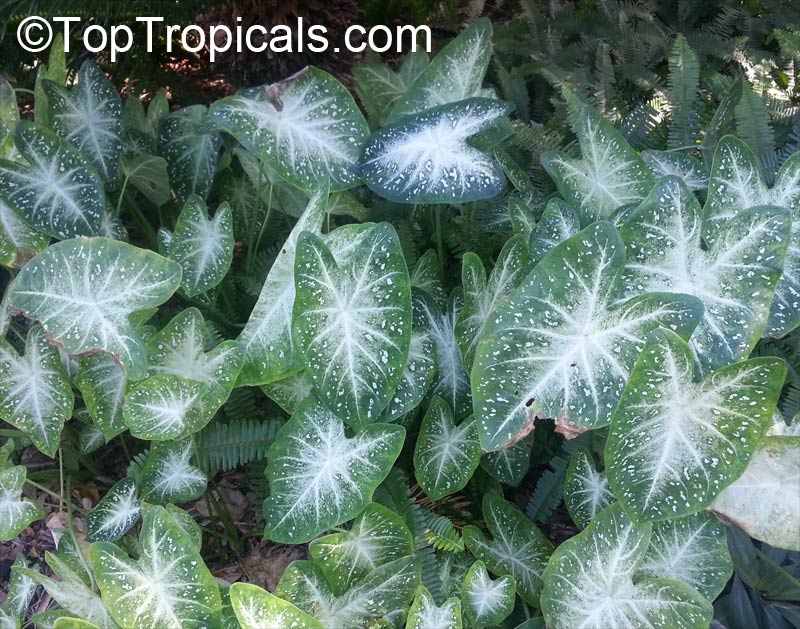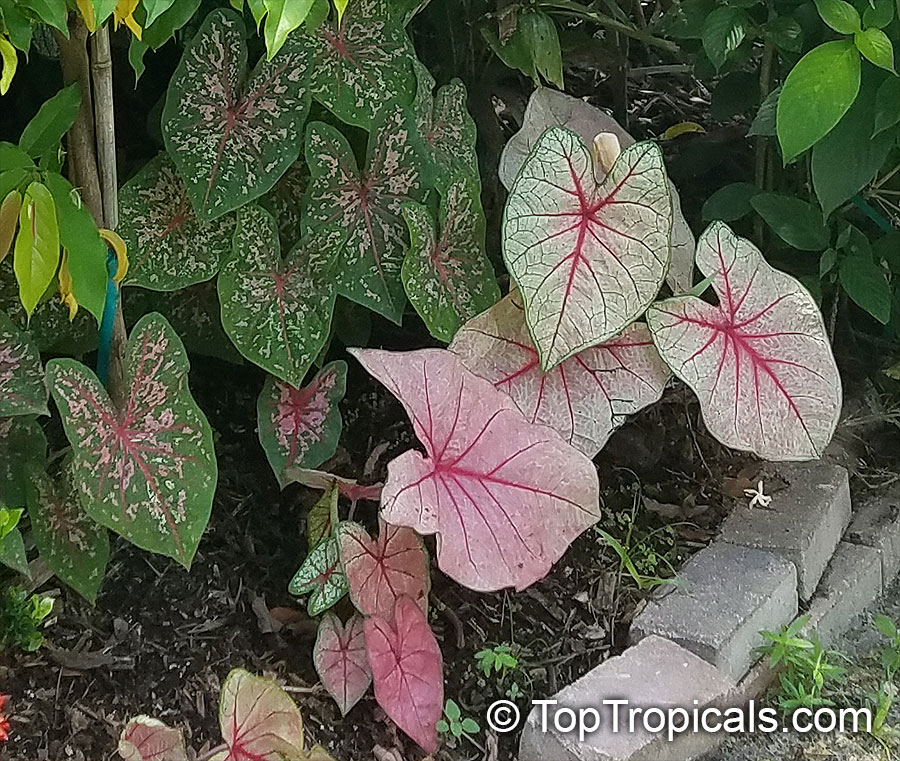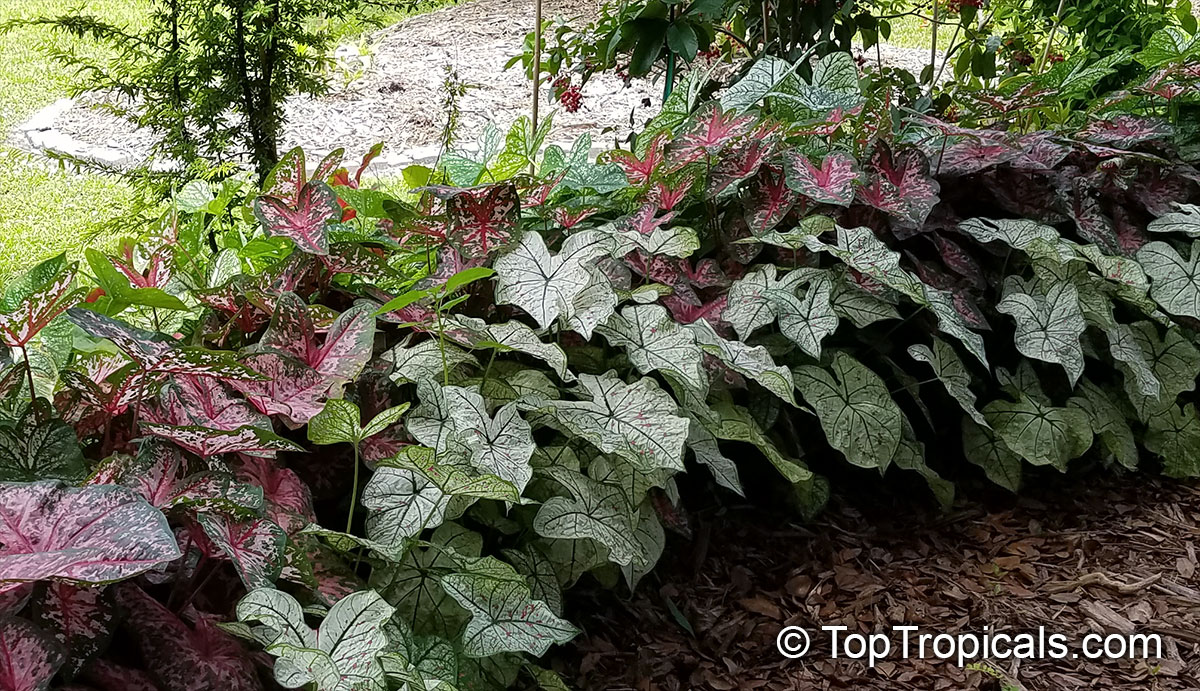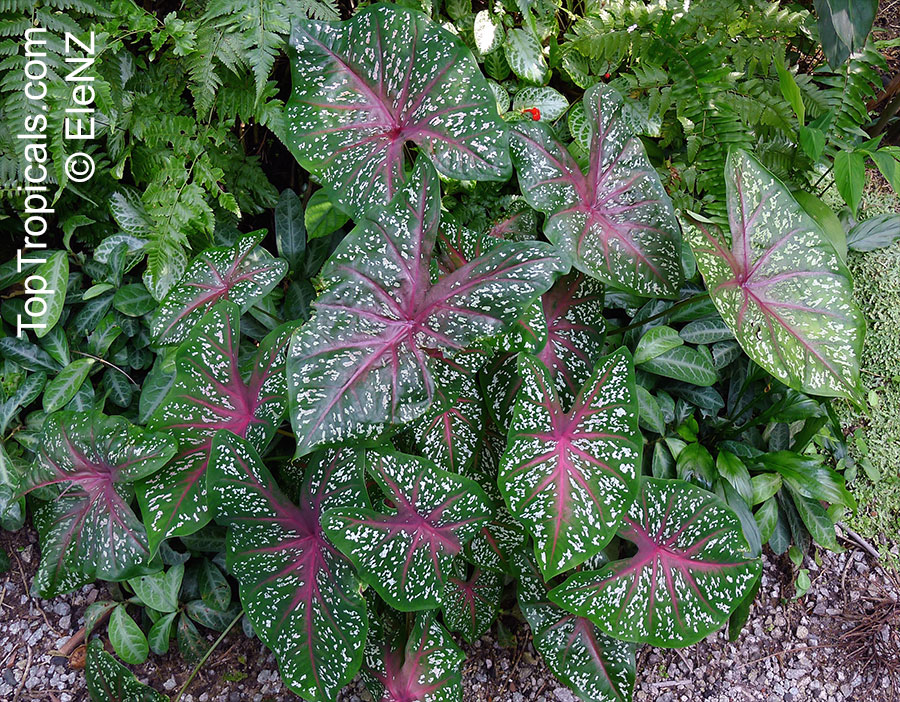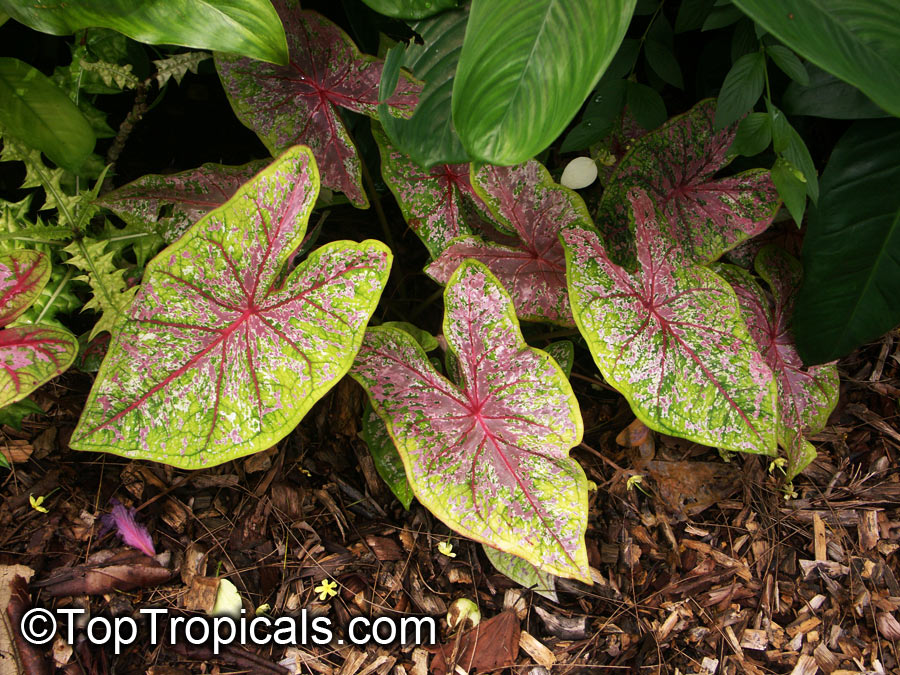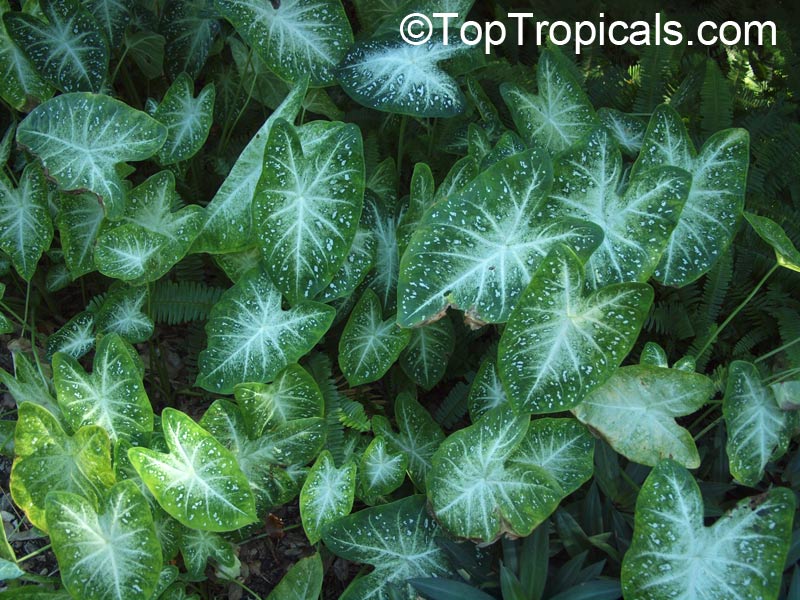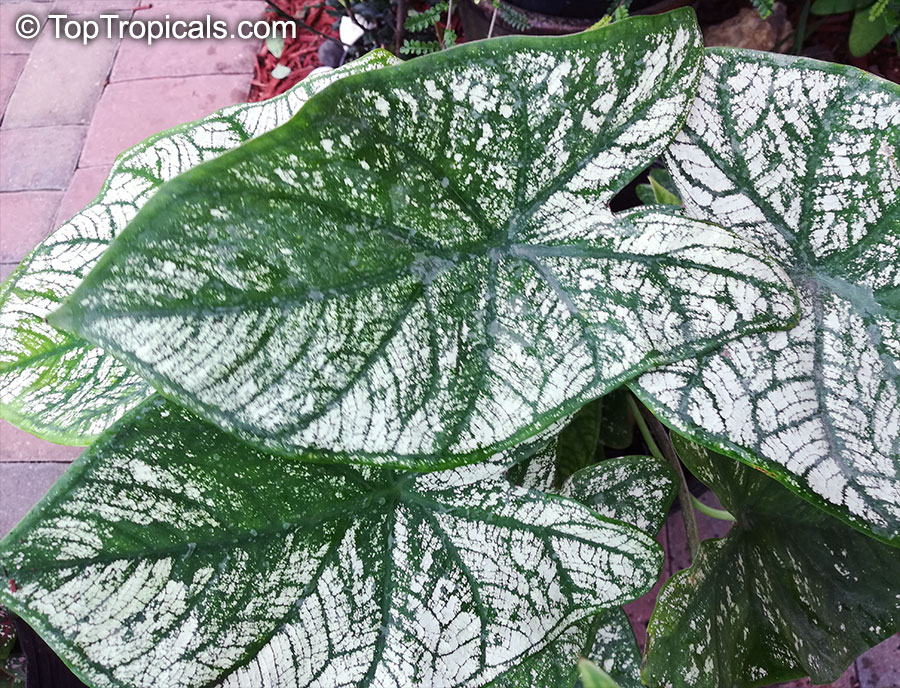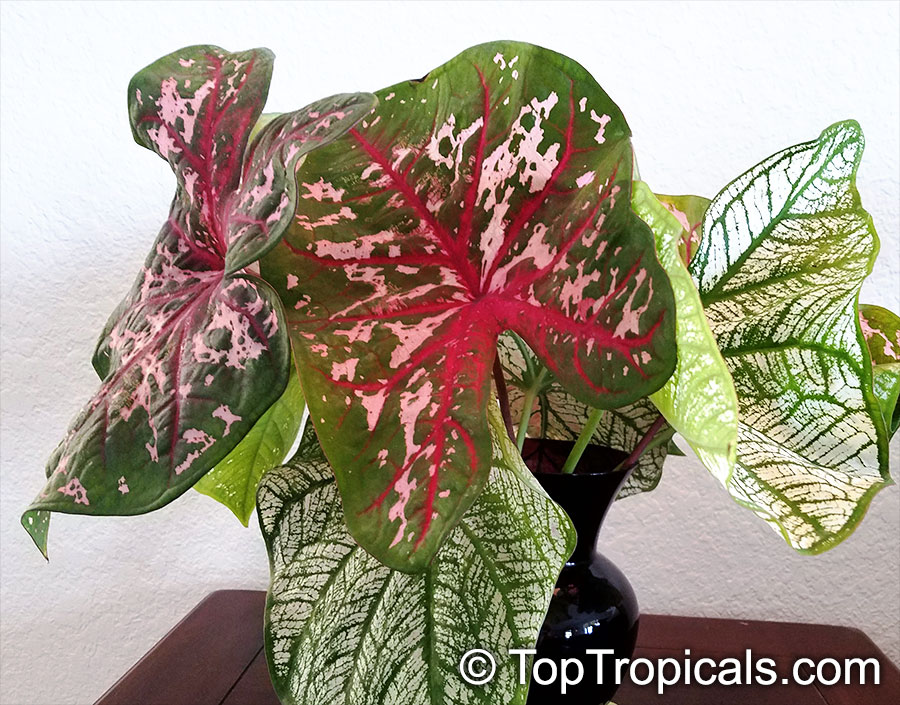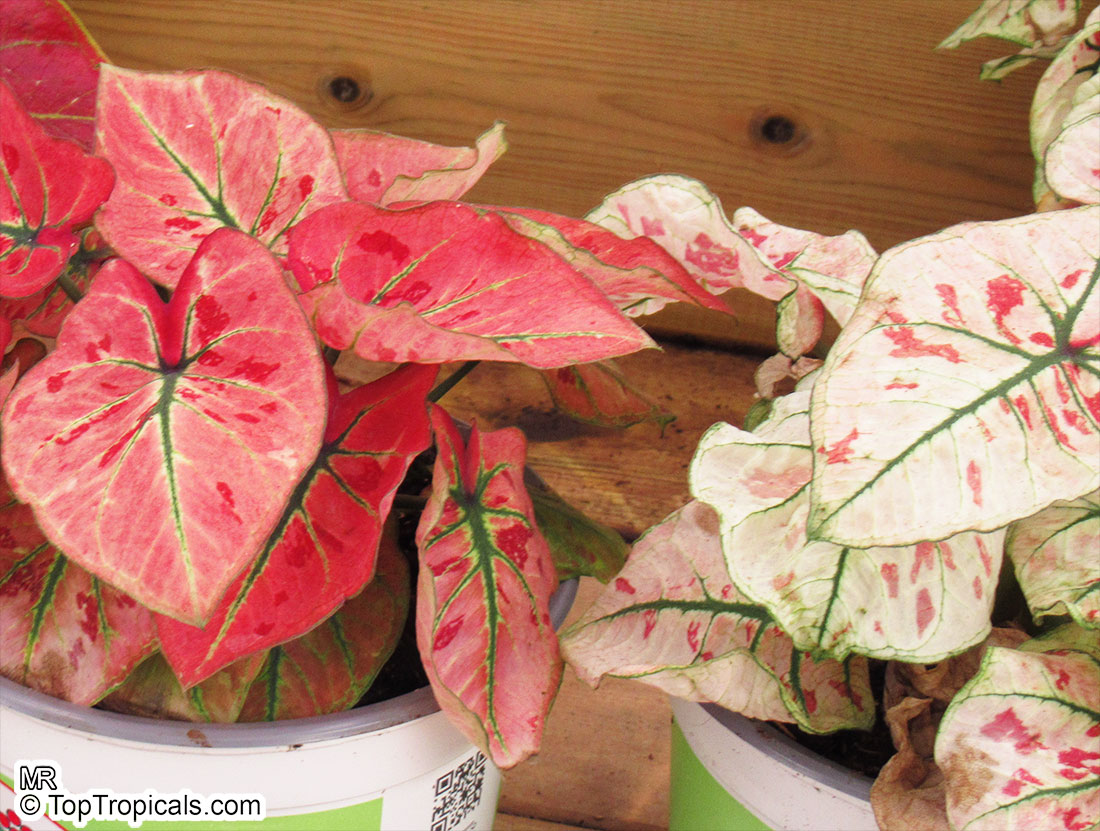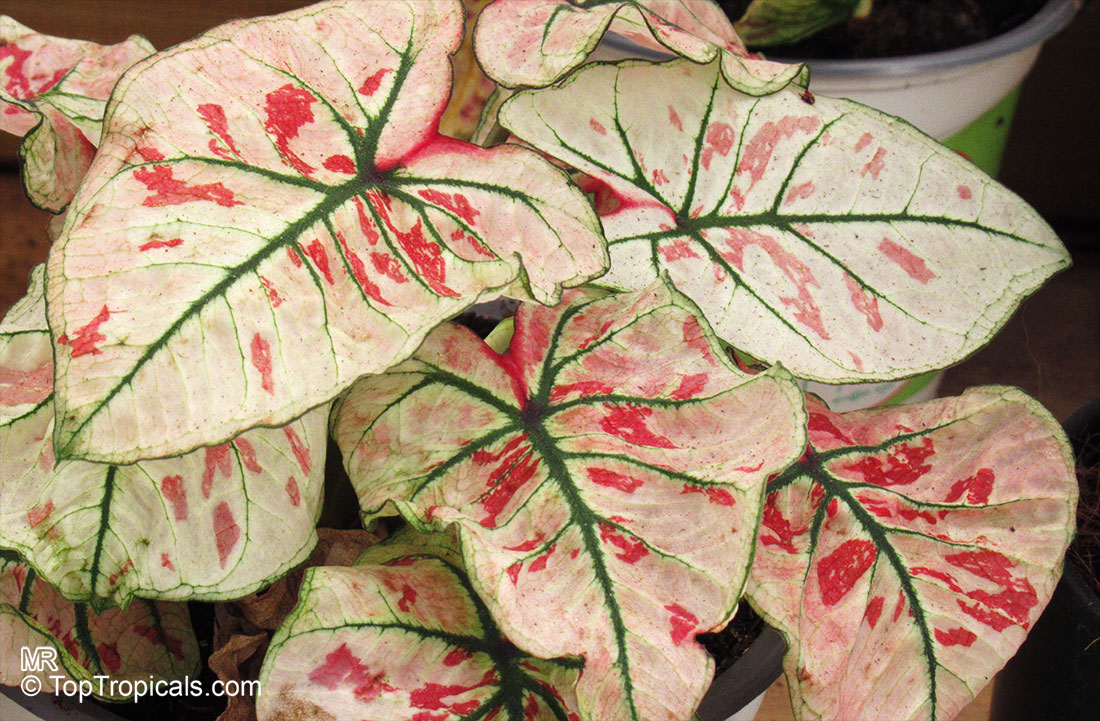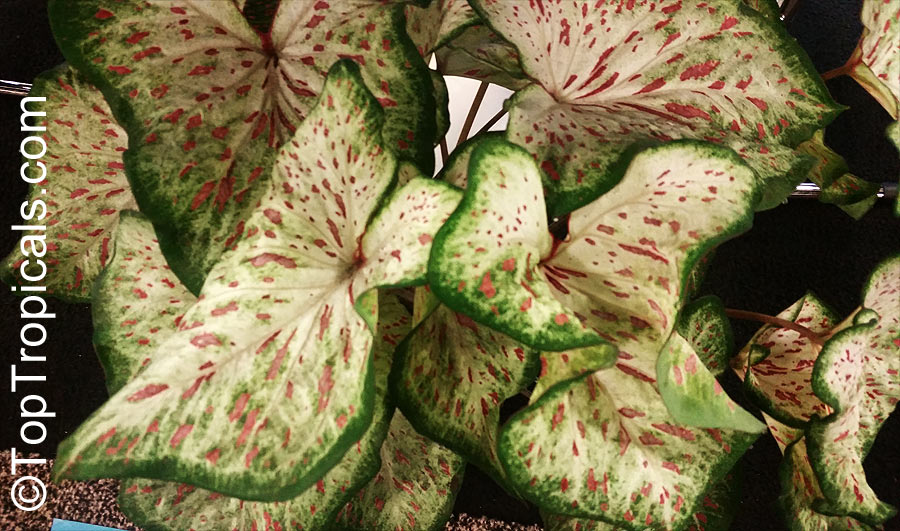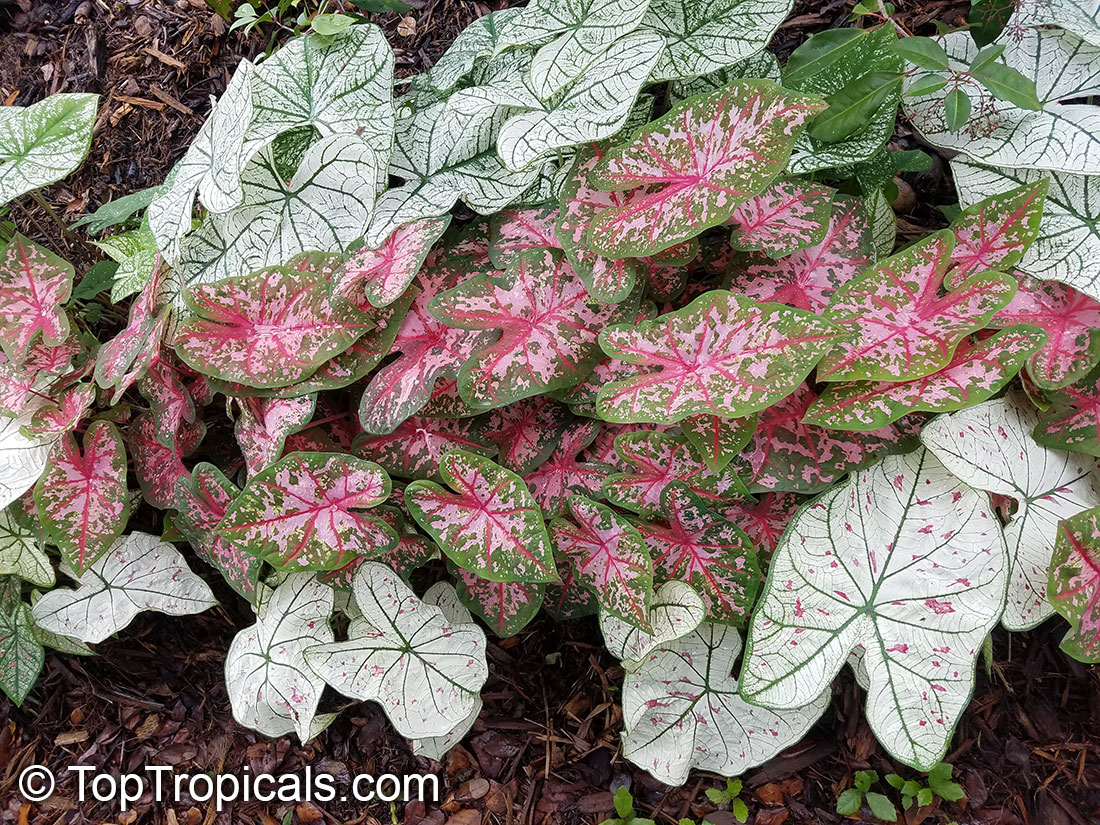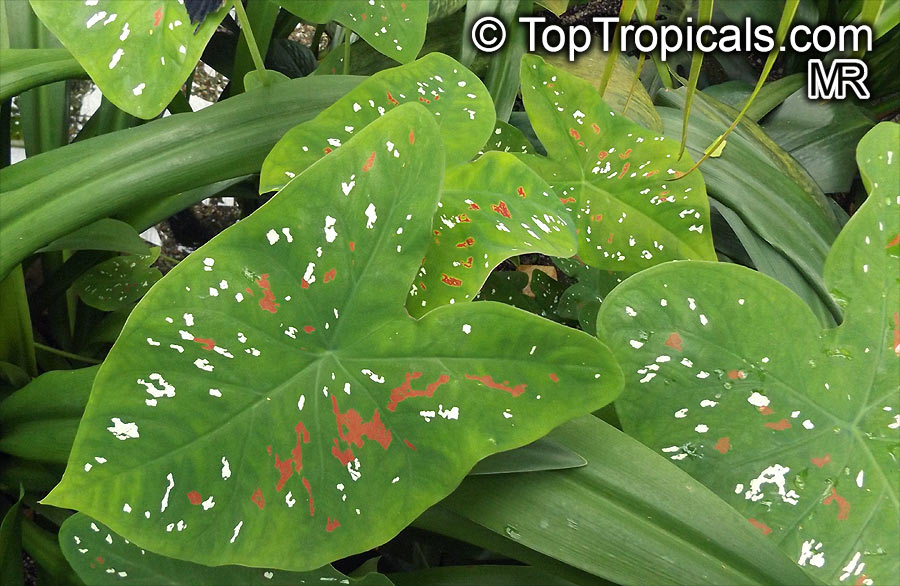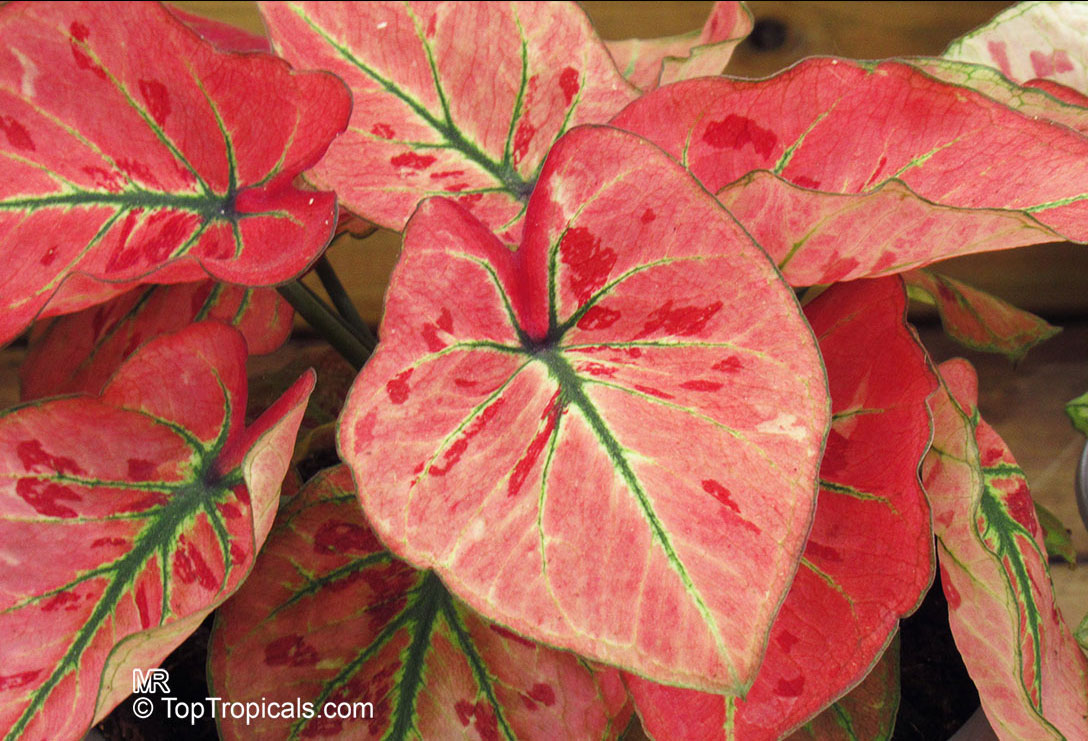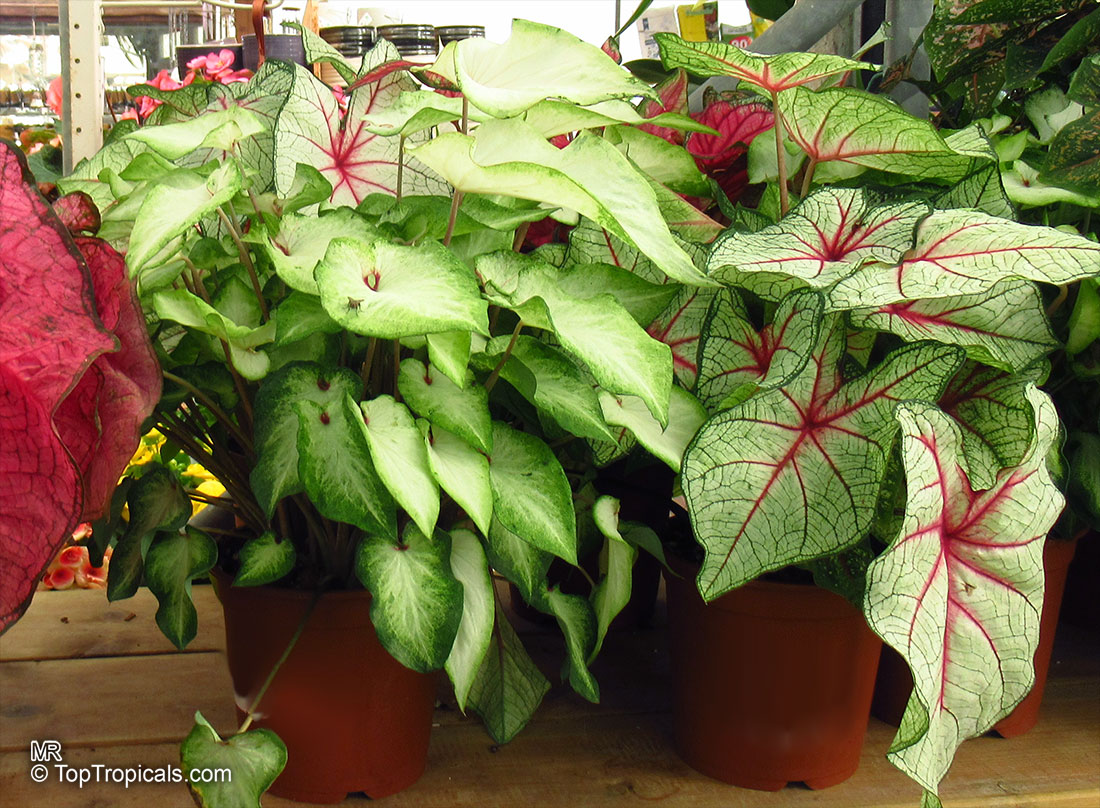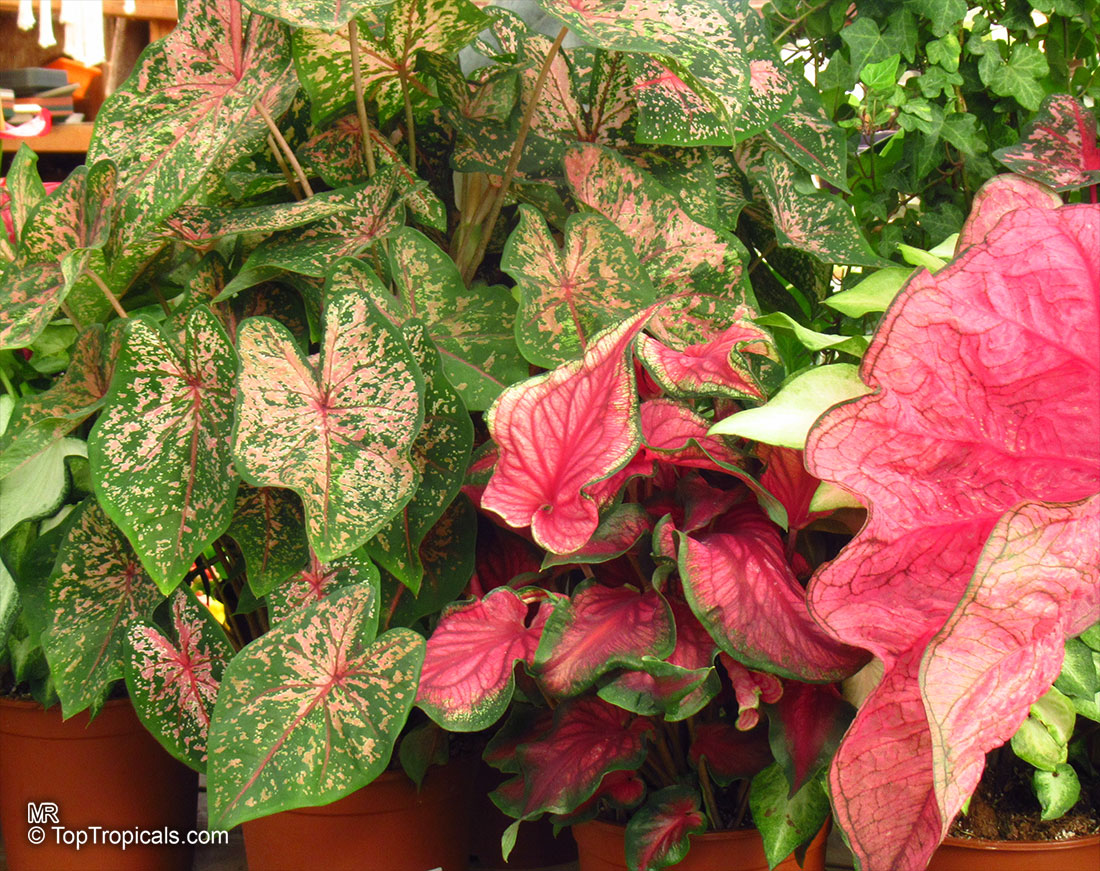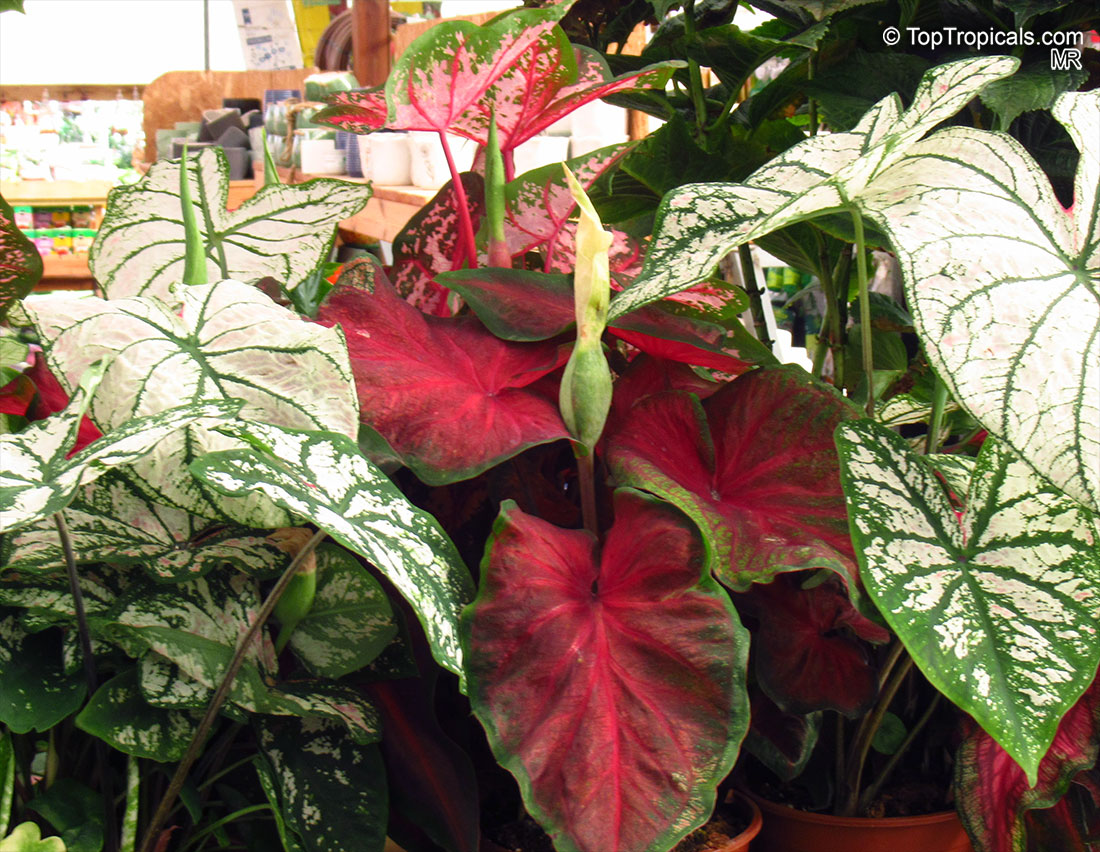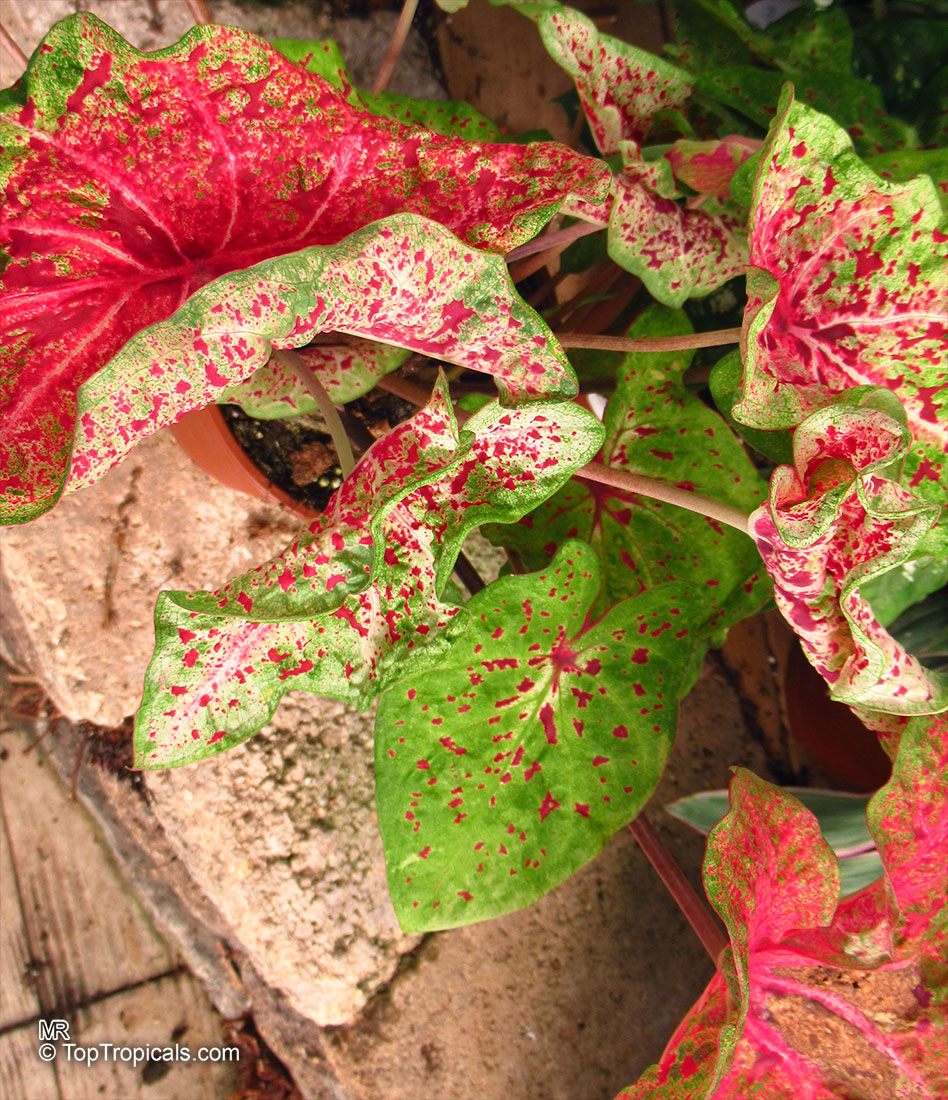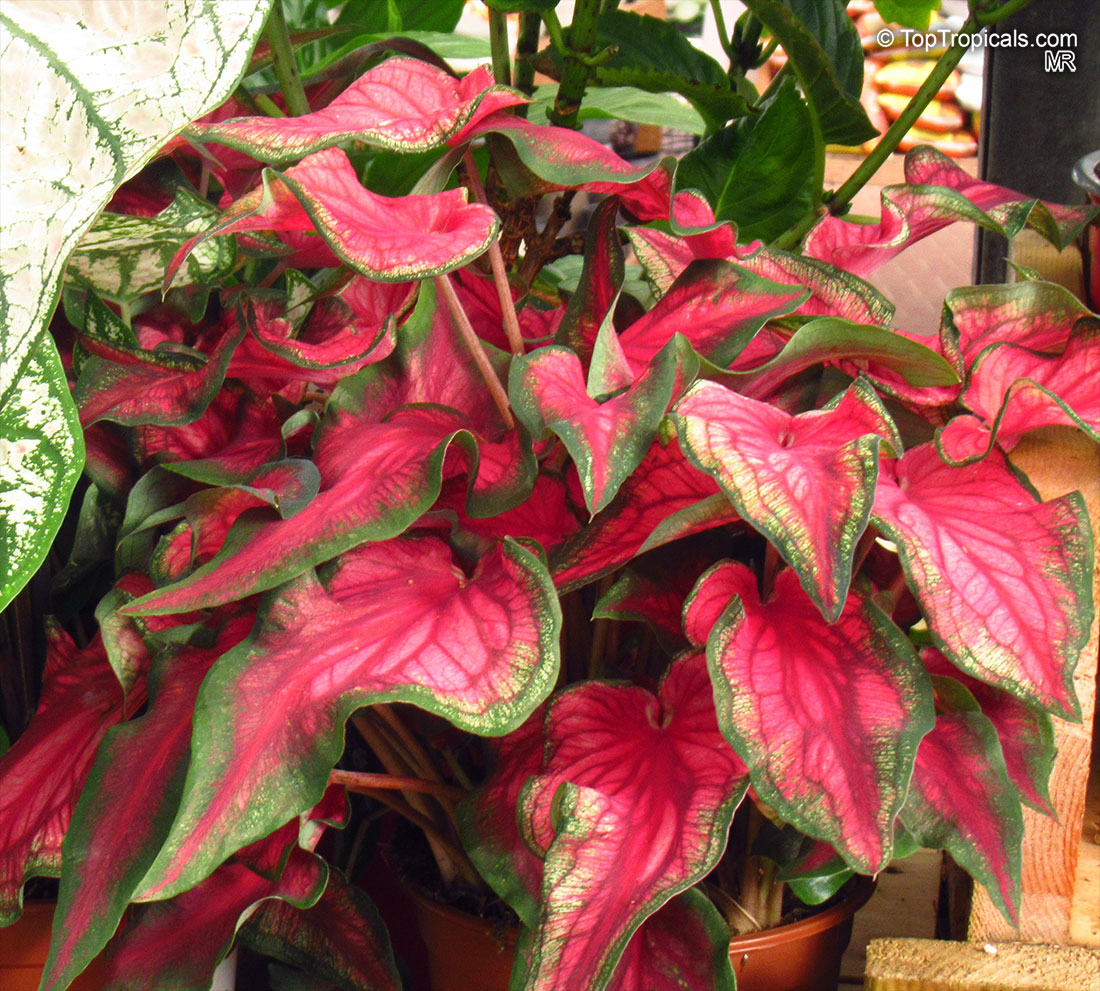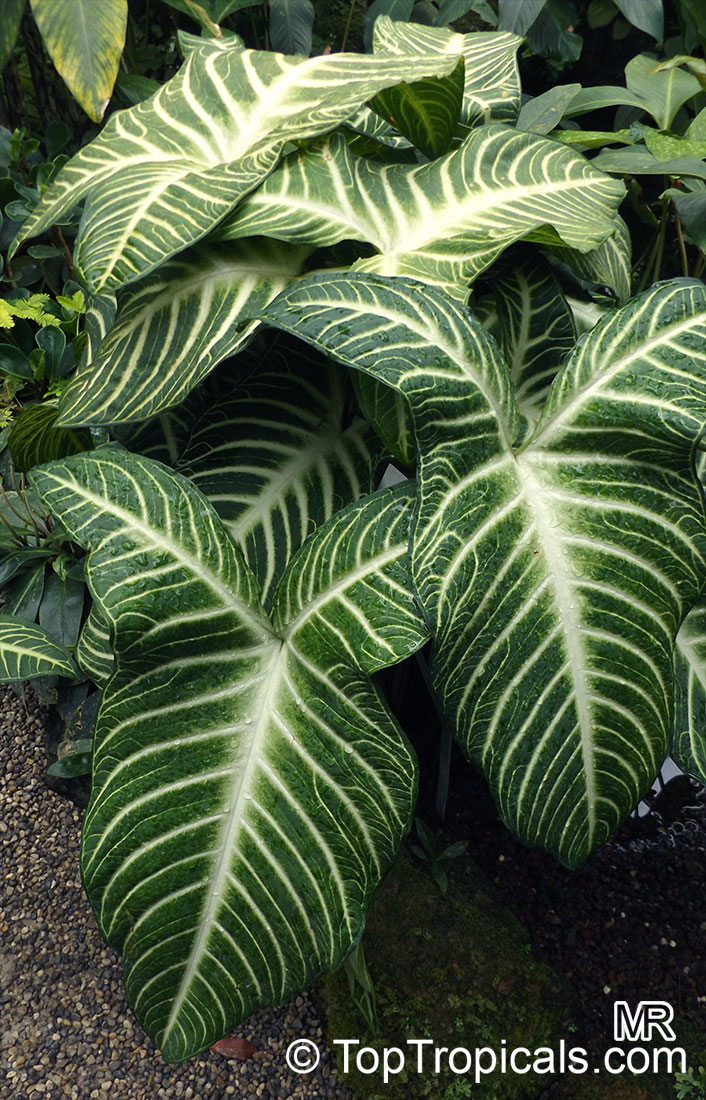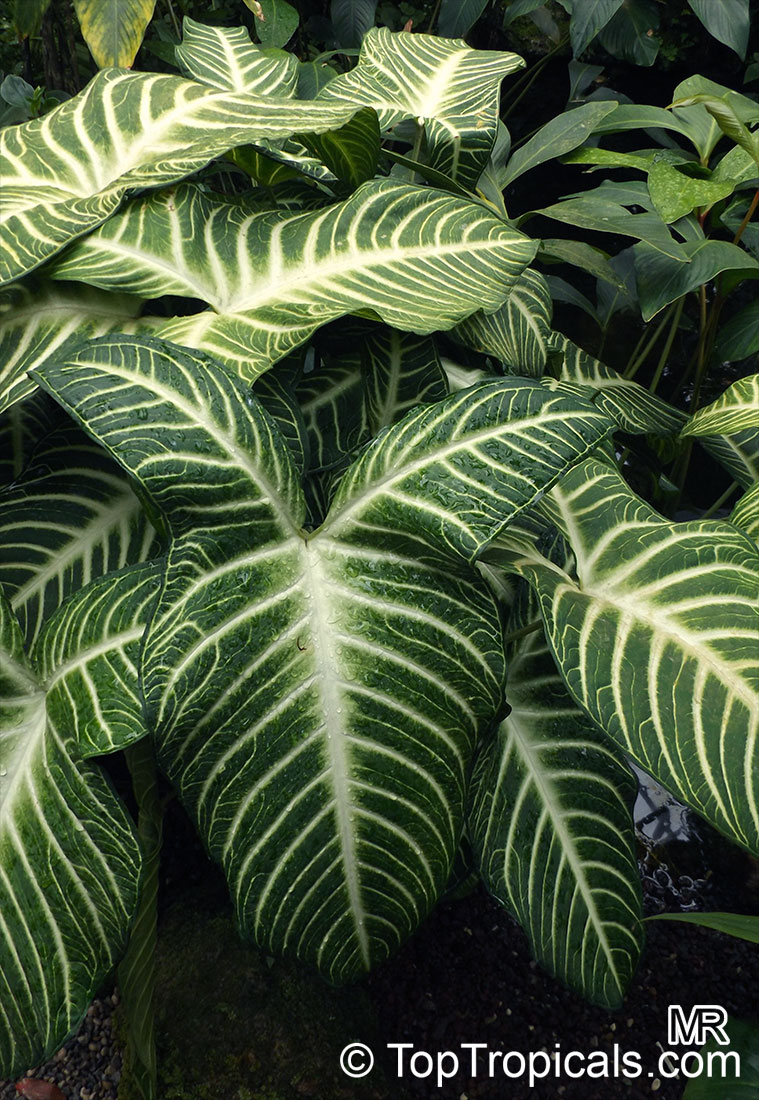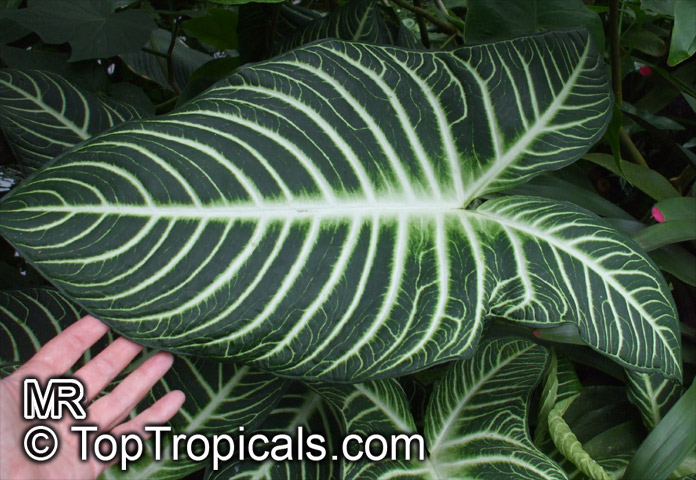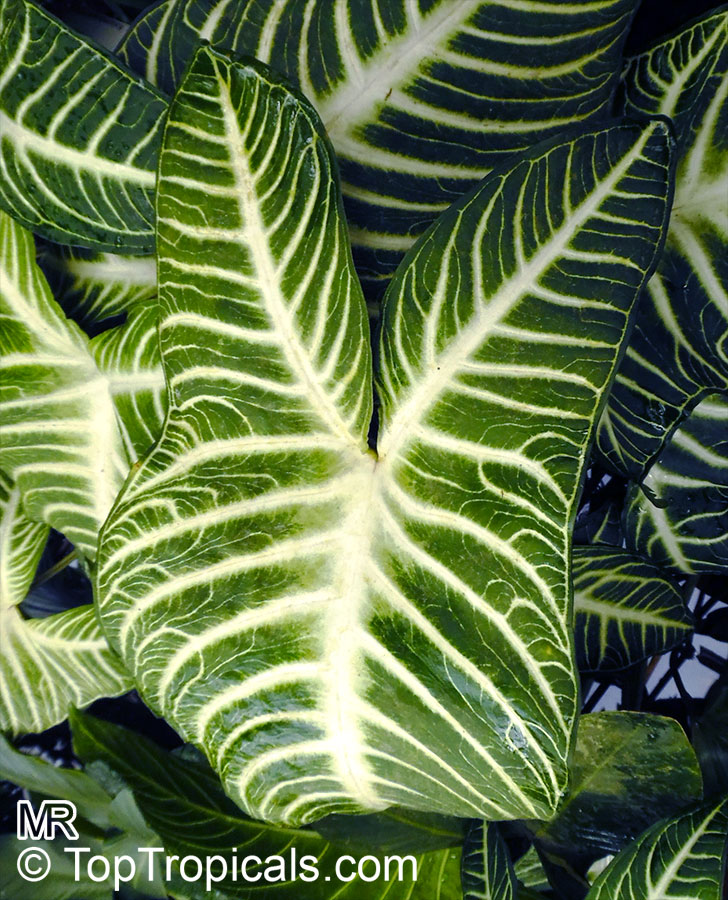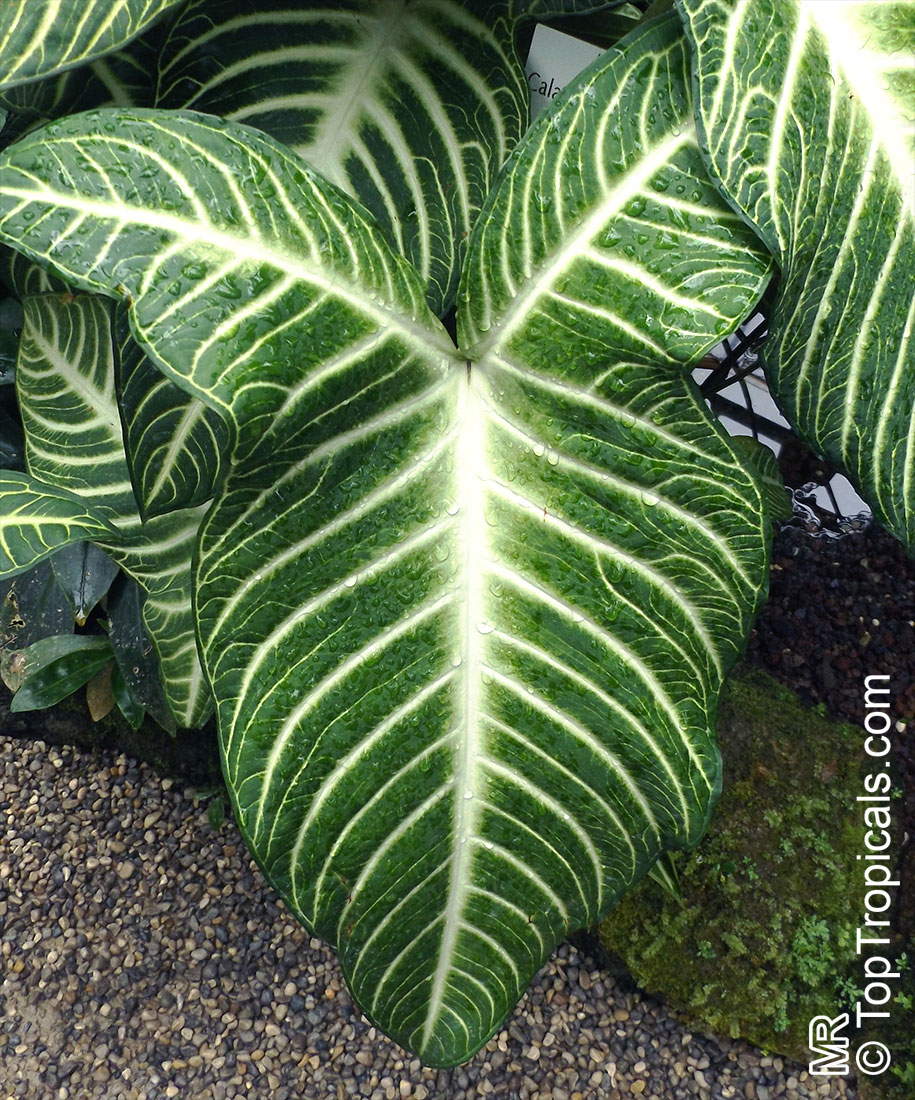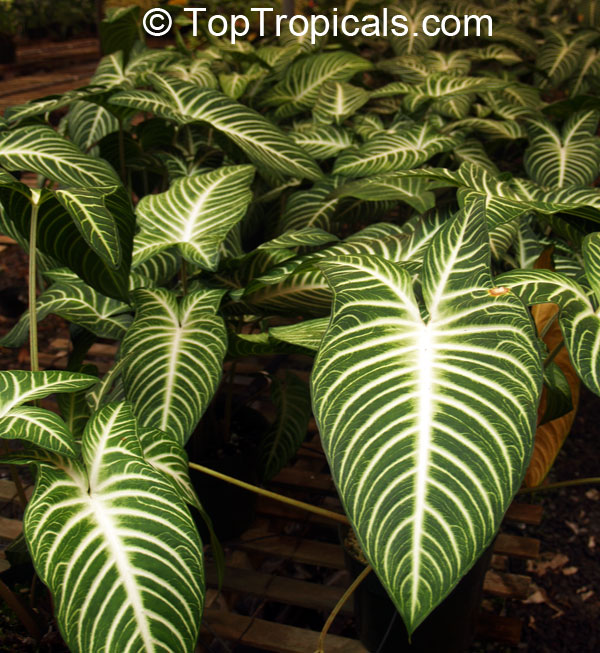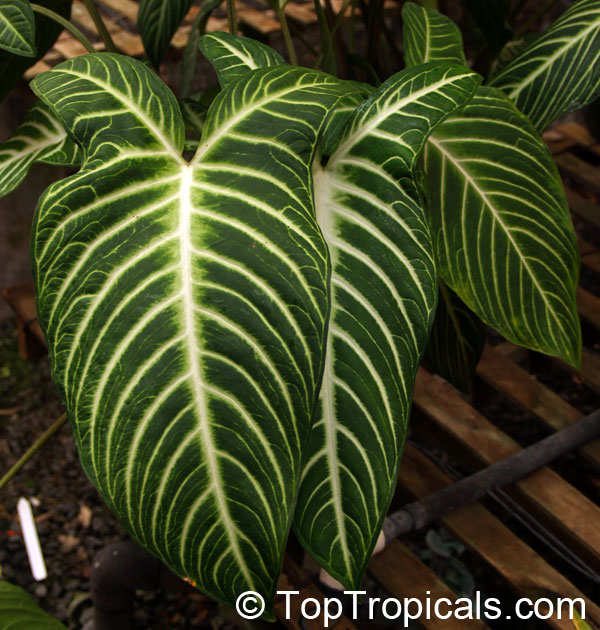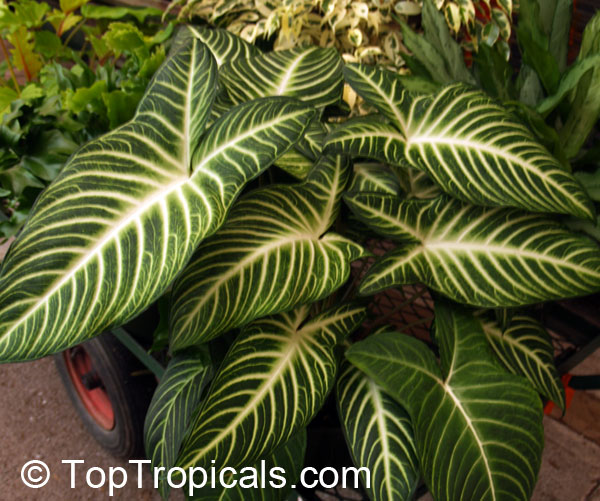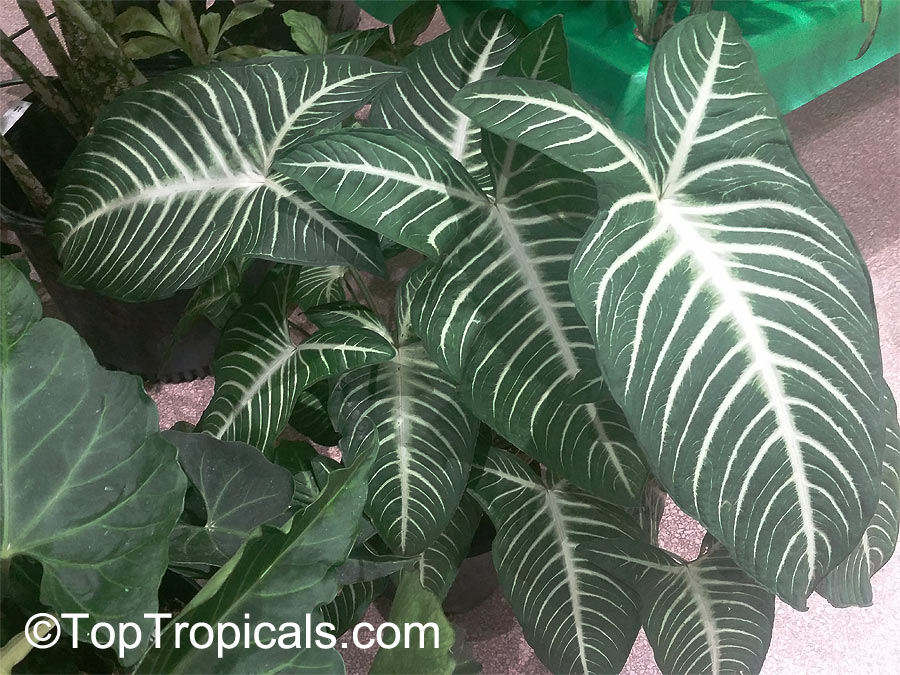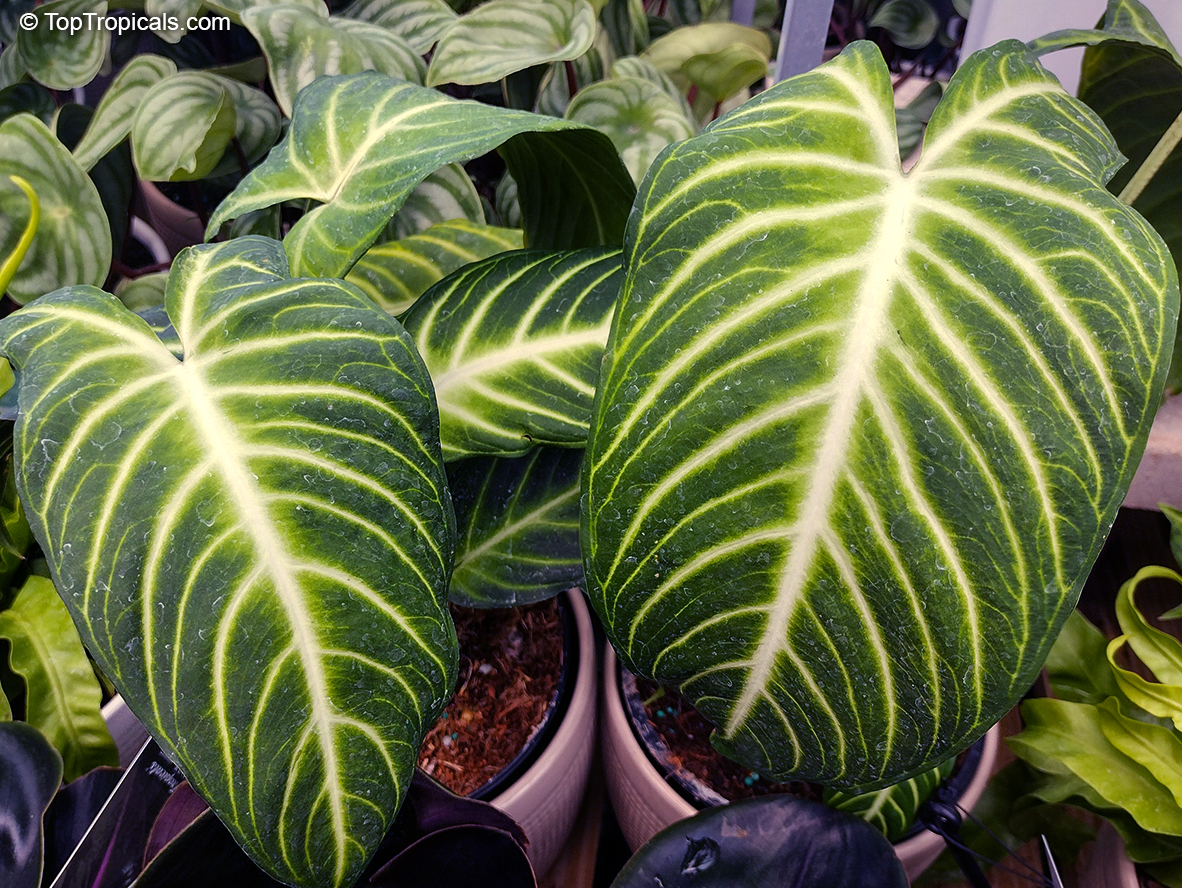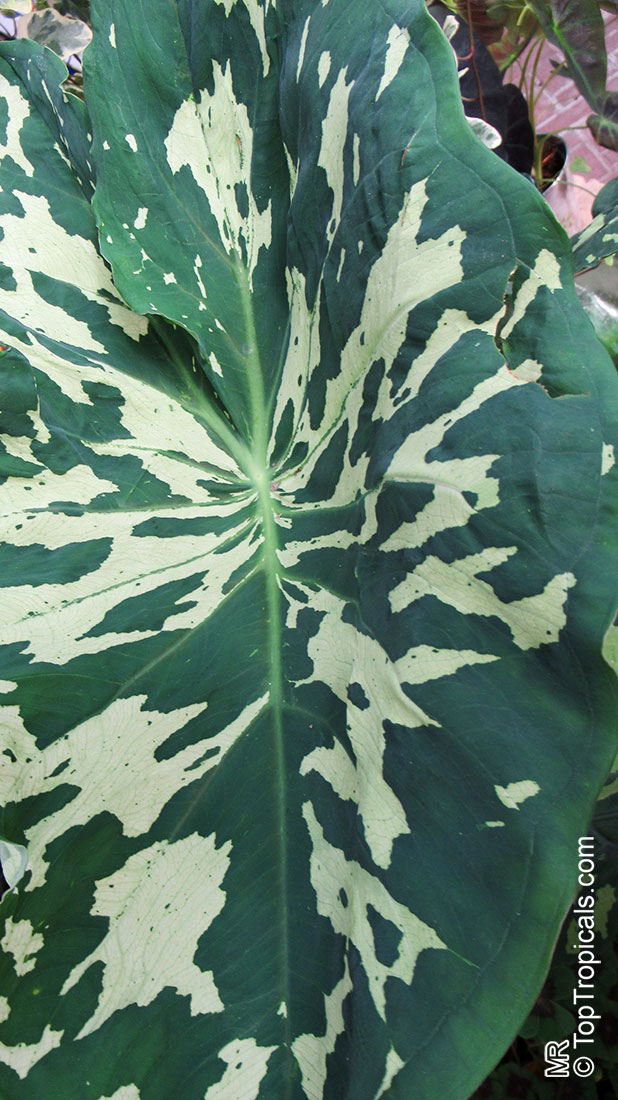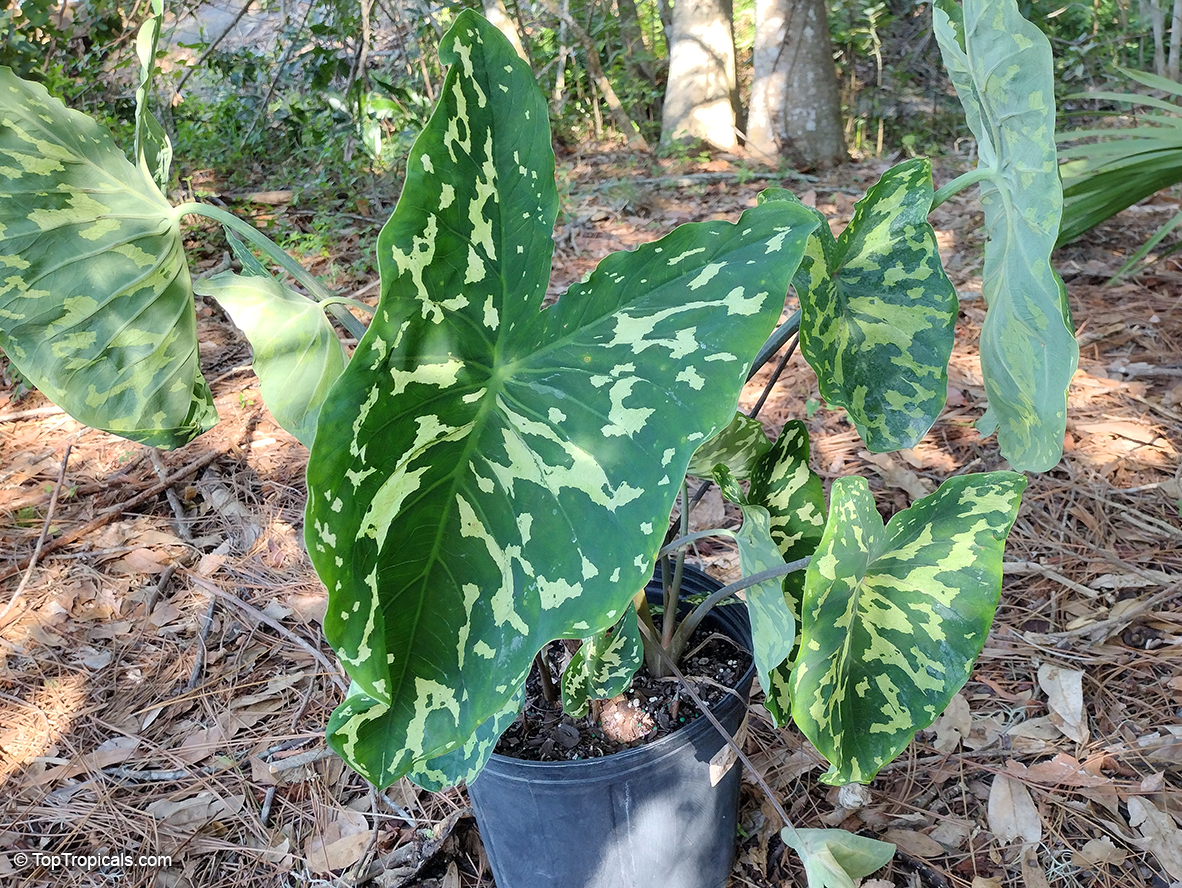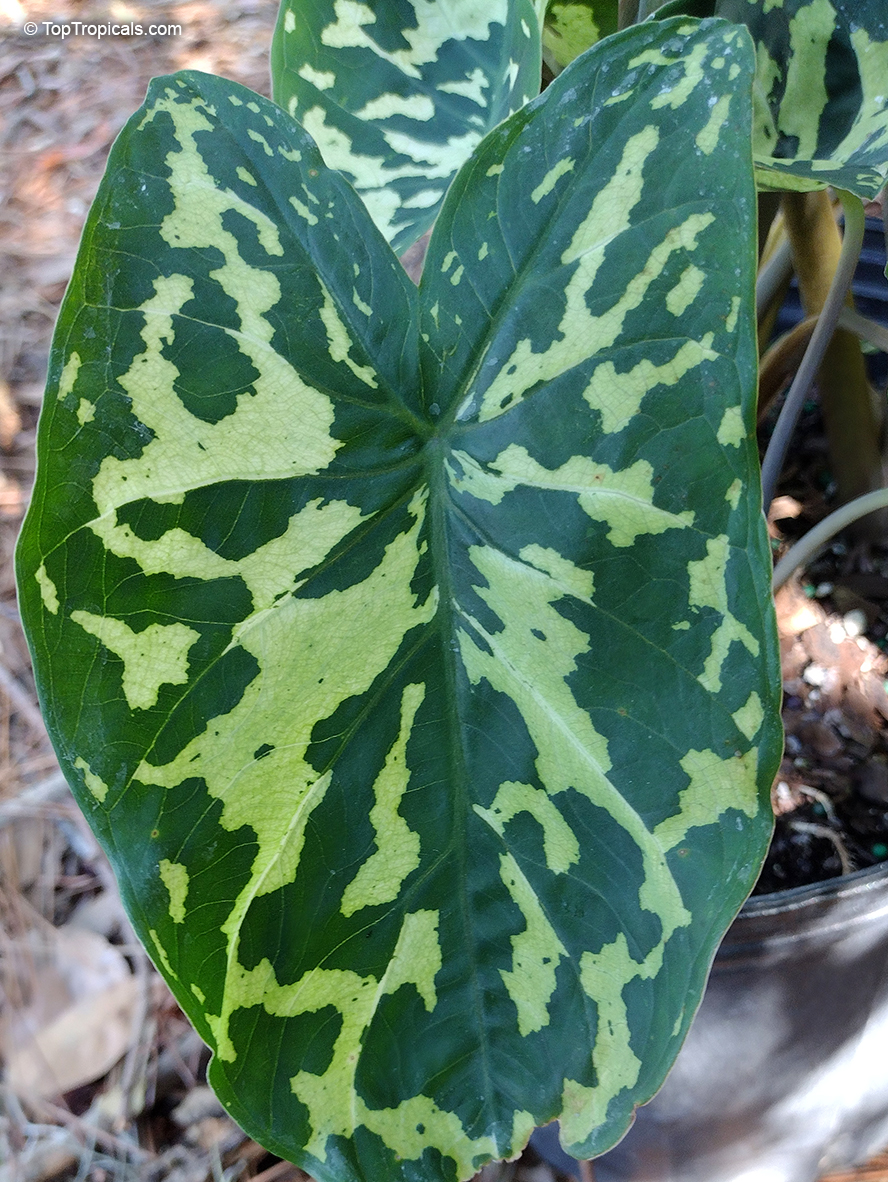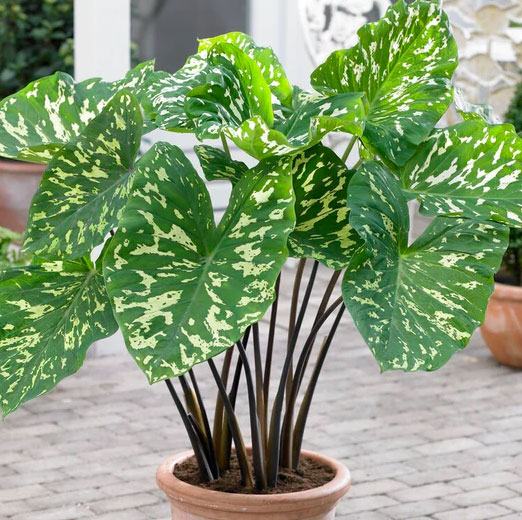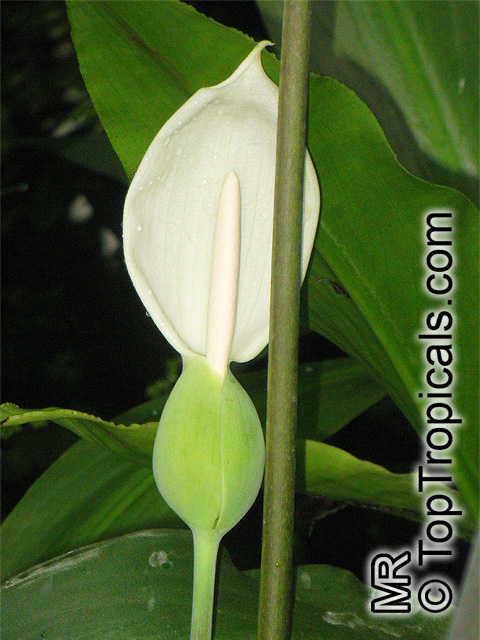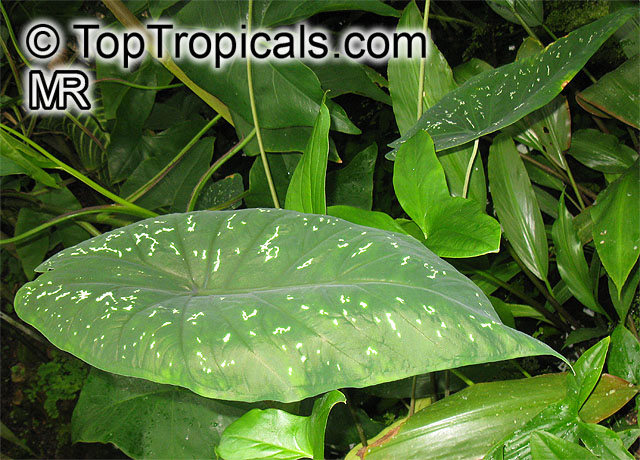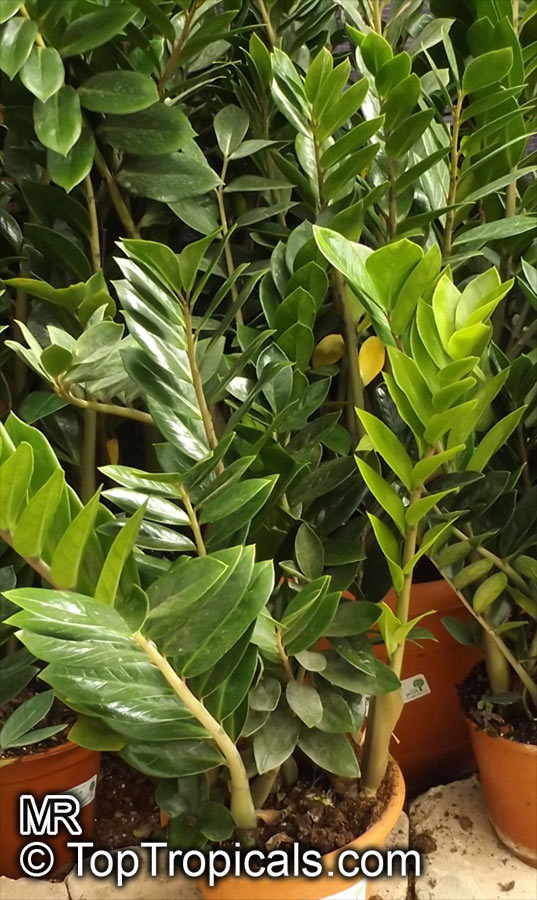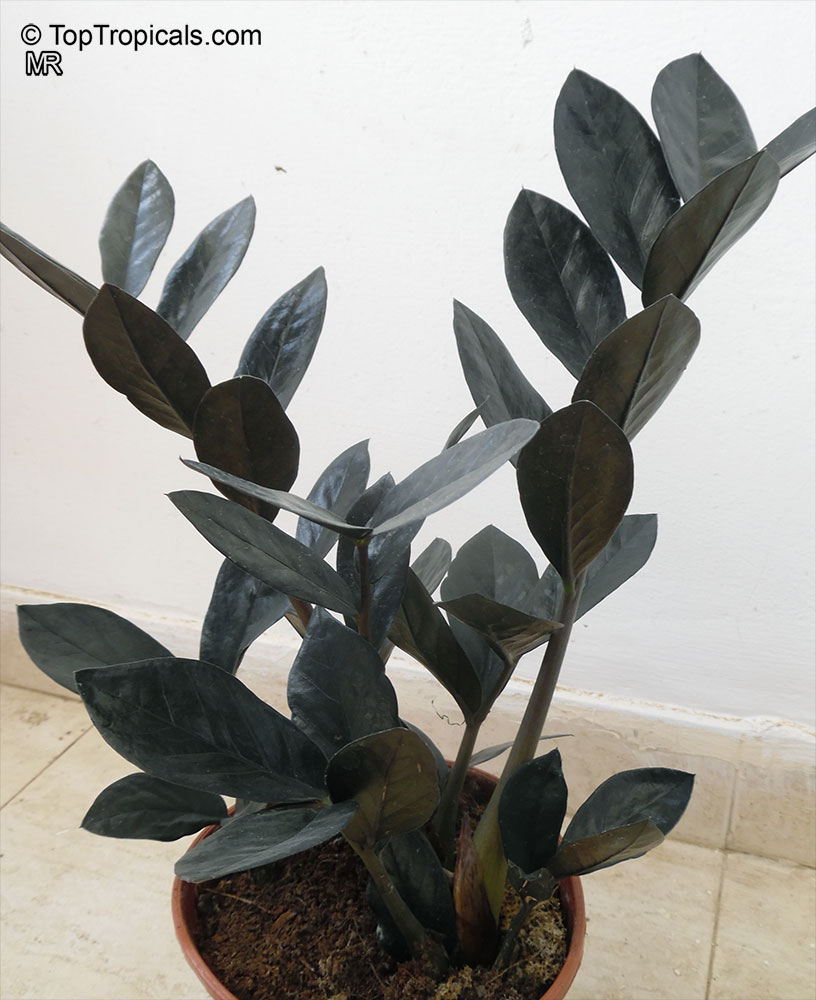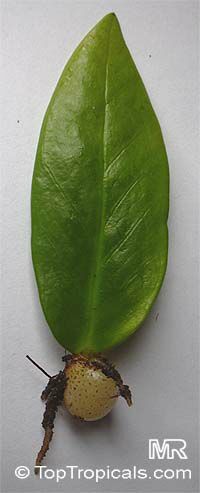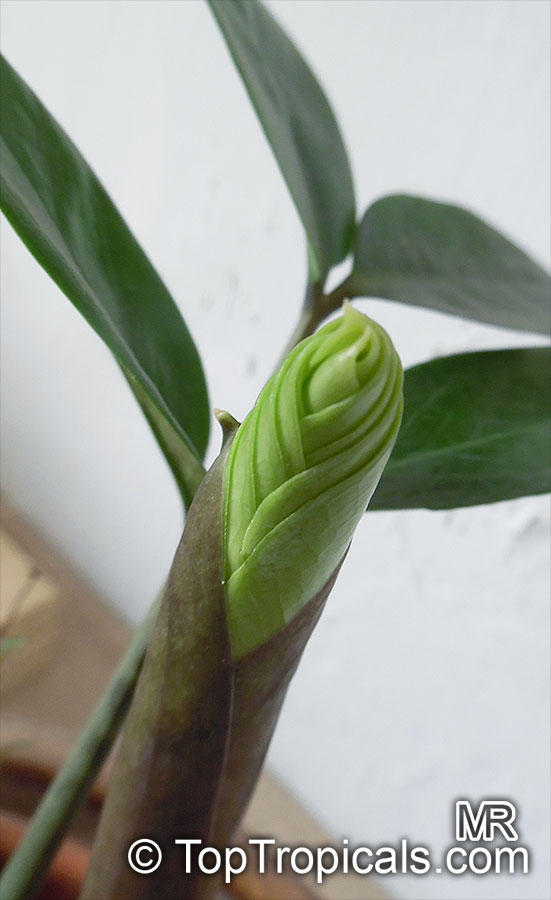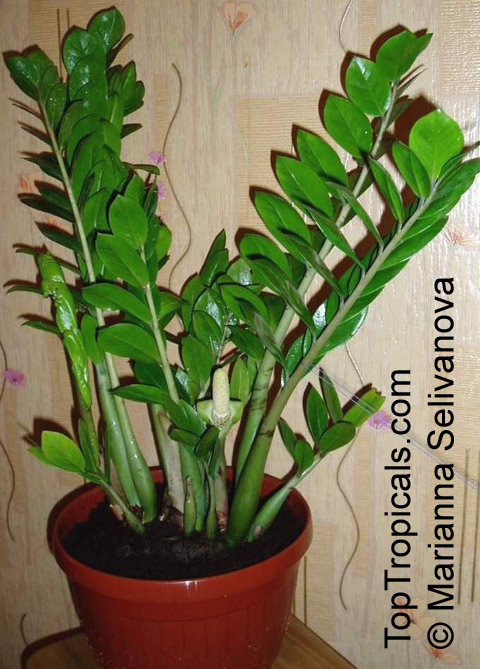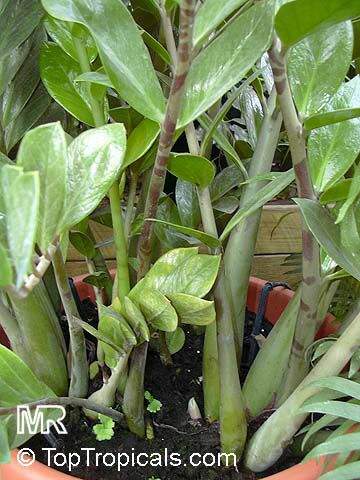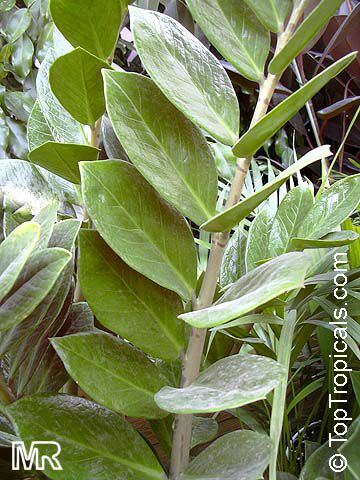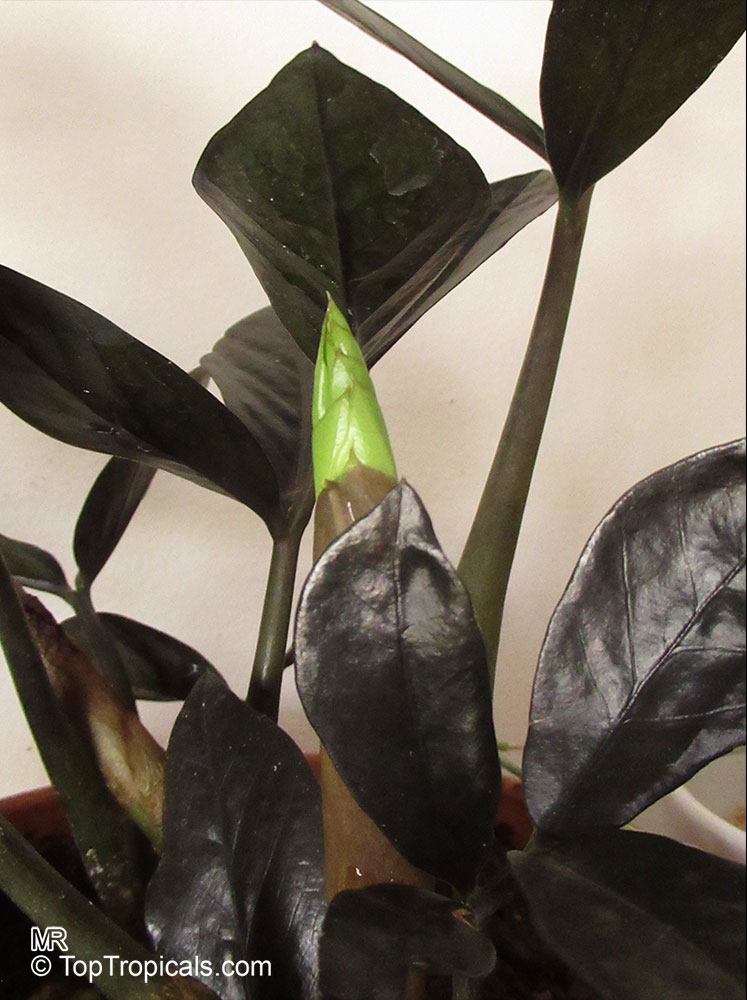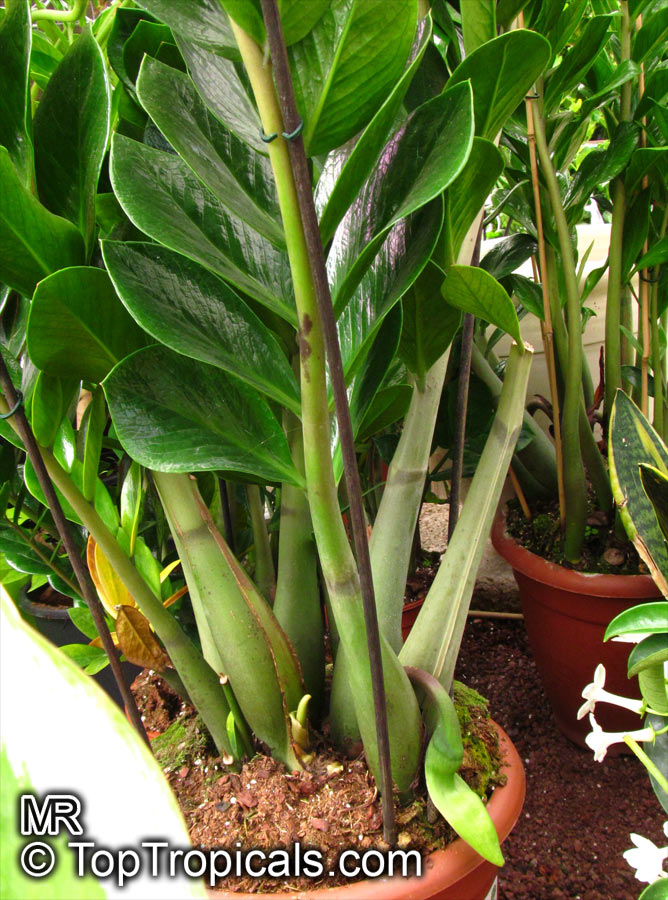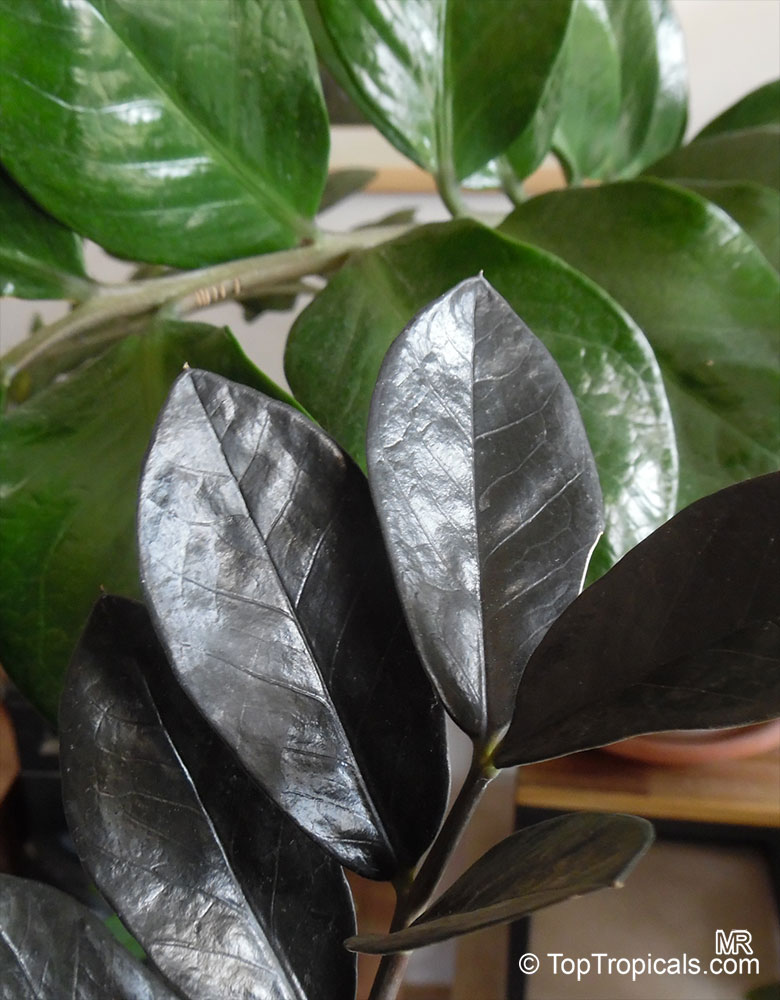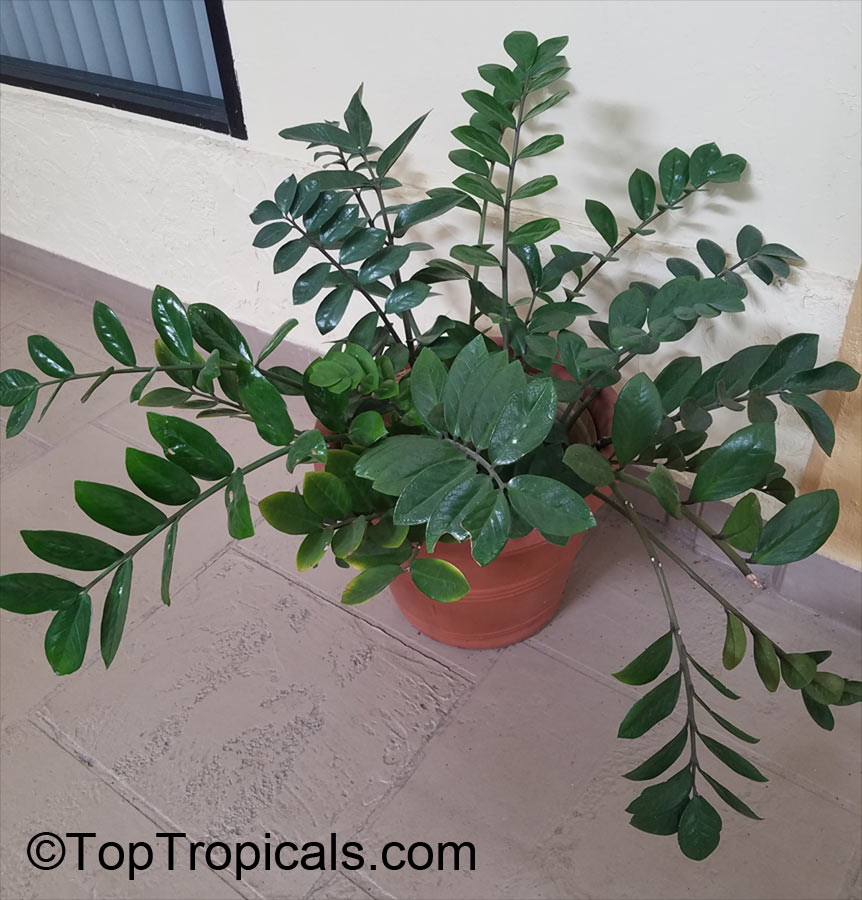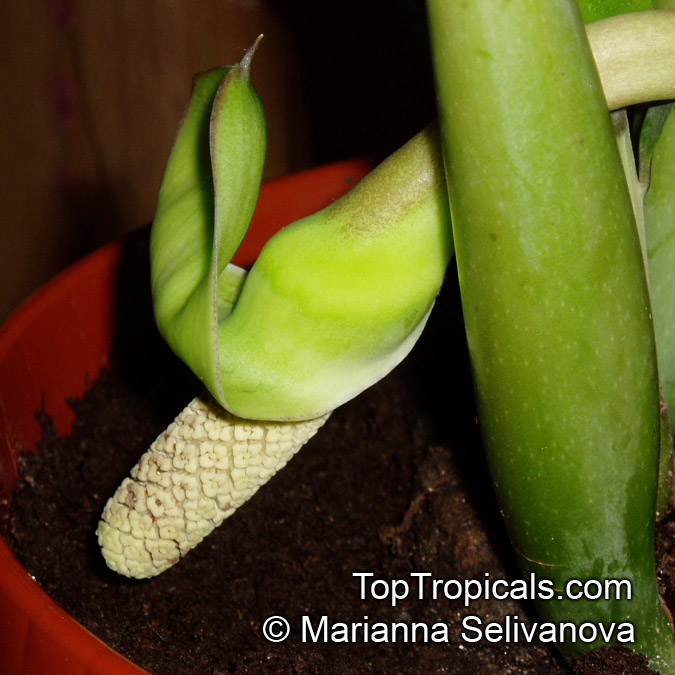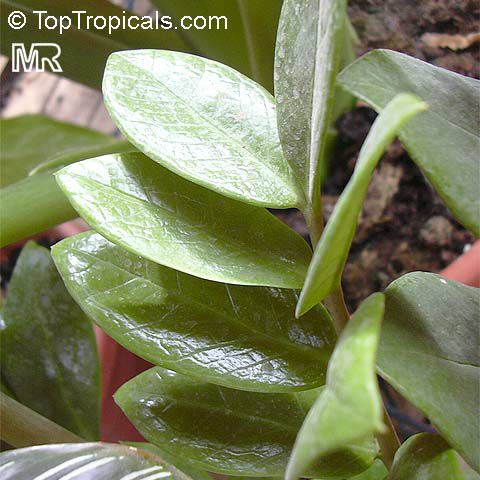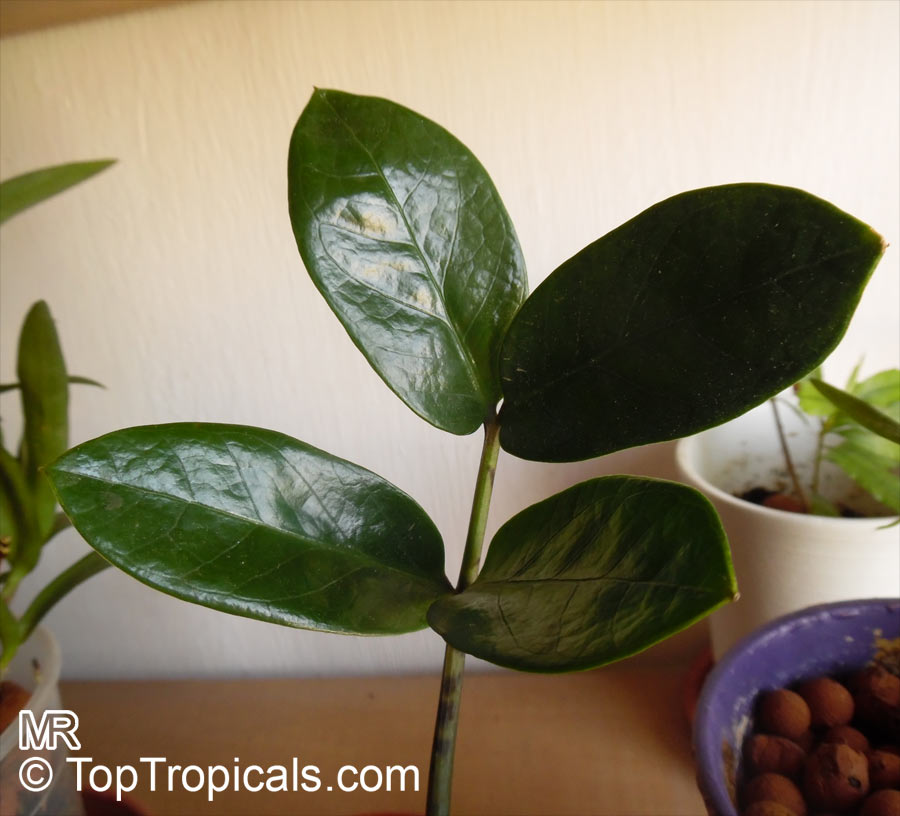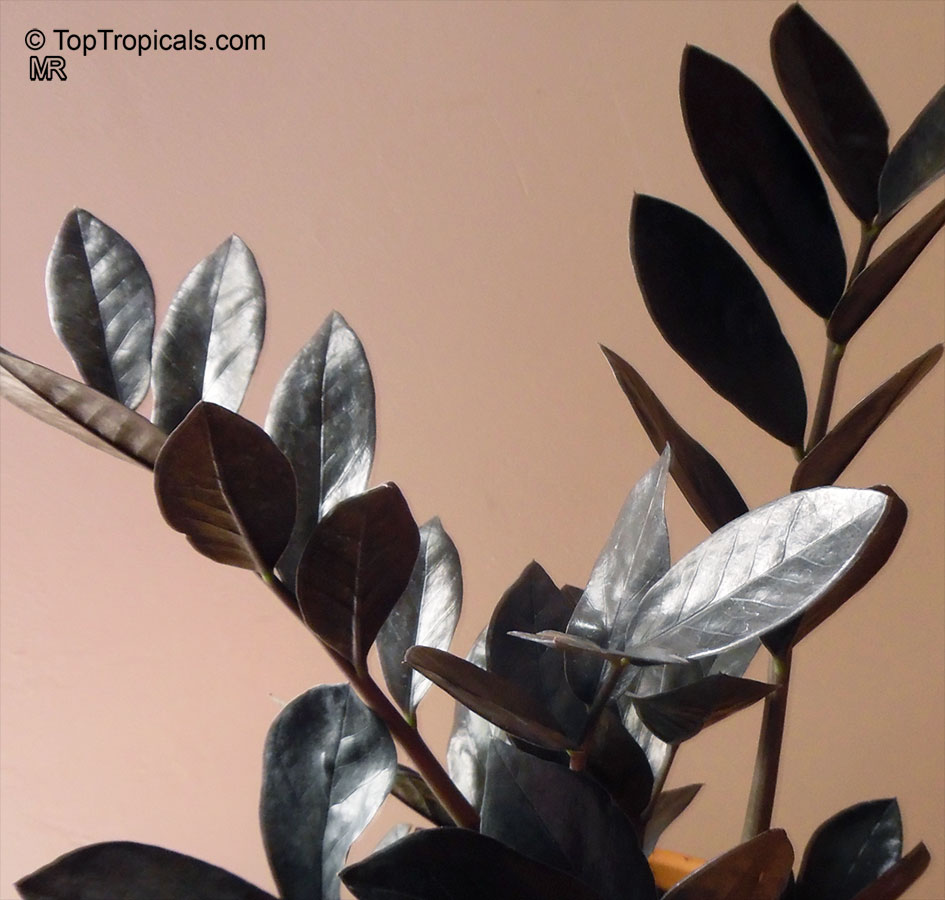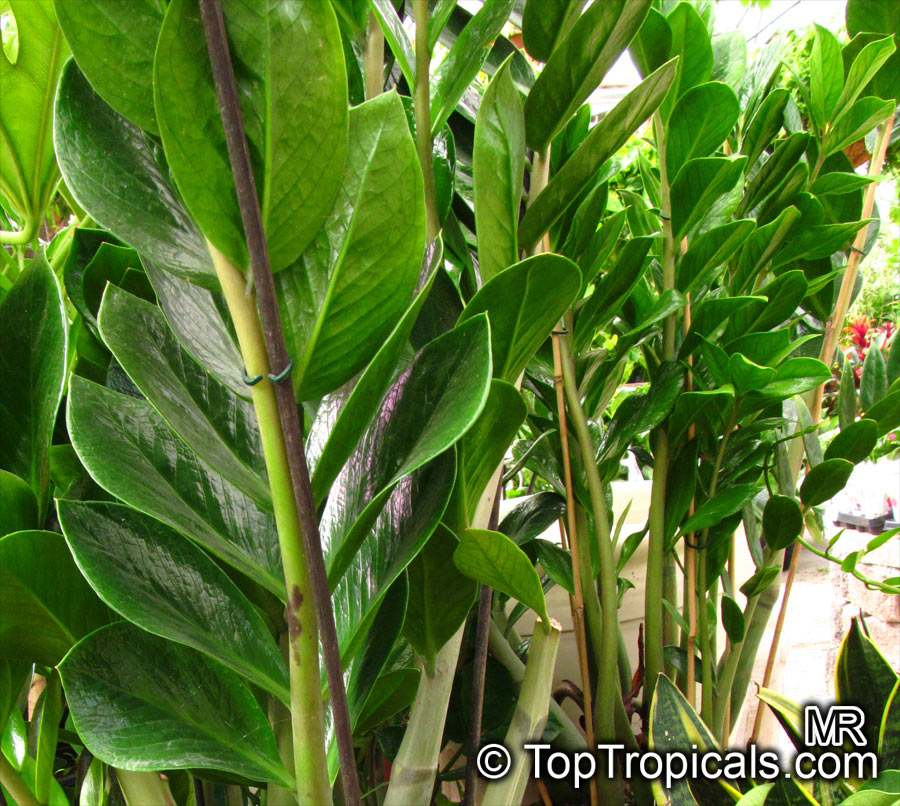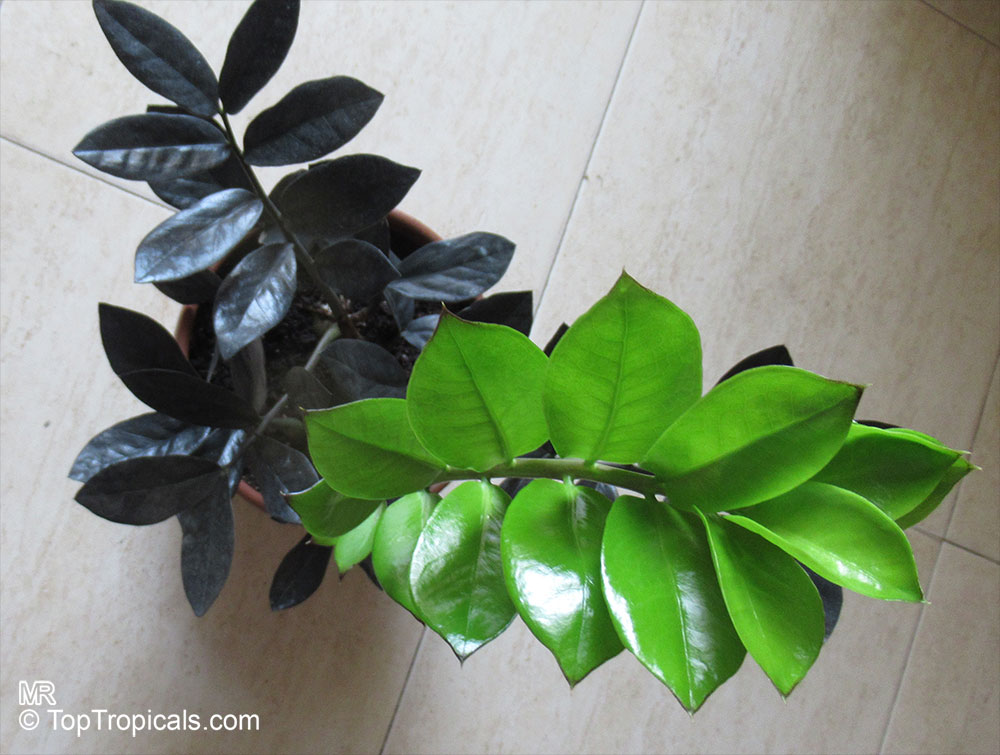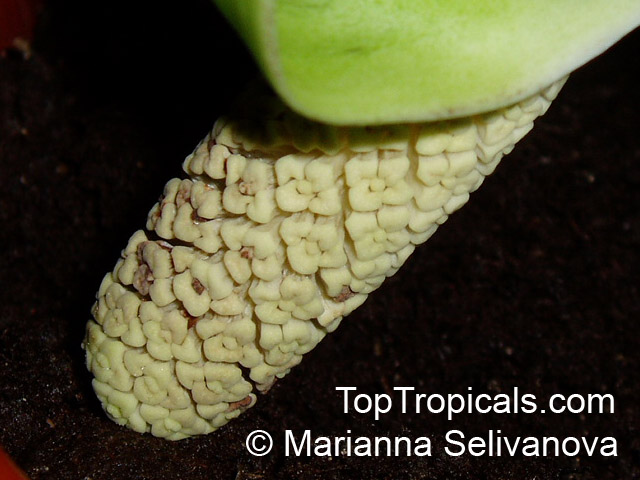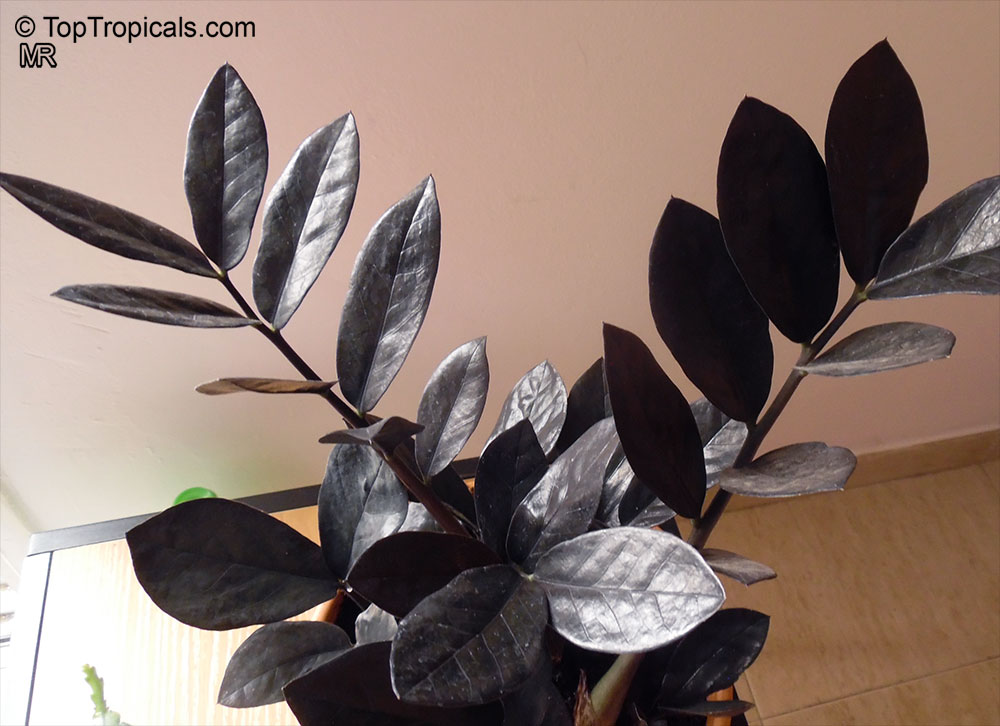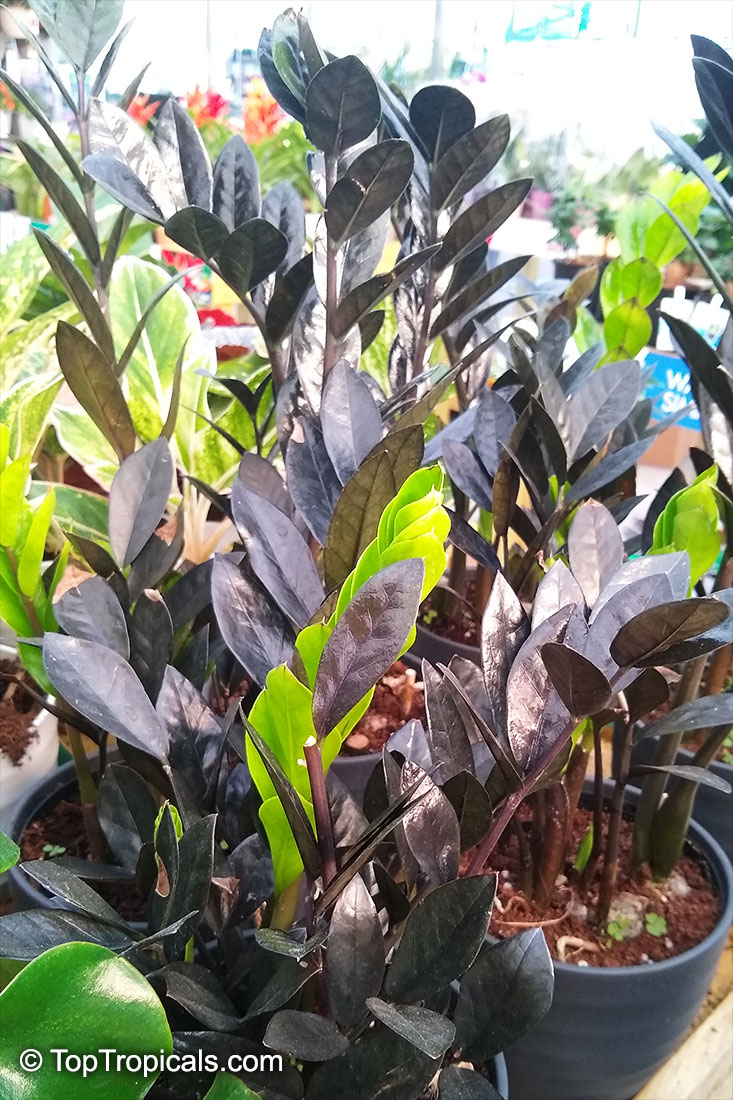Plant search results - Caladium
| Number of plants found: 5 |
Caladium bicolor
Caladium, Fancy Leaved CaladiumFamily: Araceae
Origin: South America






Caladiums are tuber-rooted tropical perennials grown for their large and showy leaves. Caladiums have no stems; the leaves are borne on long leaf stems that arise directly from the underground tuber. The caladium inflorescence (flower) is normally about 9 inches long with a greenish white spadix and spathee (the fleshy upright spike and "bloom"). The many cultivars of caladium were developed from the wild Caladium bicolor that grows naturally in tropical South American forests that have pronounced wet and dry seasons. Outdoors, caladiums should be planted in well drained, humus rich soil with a slightly acid pH. Successful gardeners dig the tubers in autumn and store in a cool 55-60F, dry place until replanting 4-5 months later in spring. Caladiums need lots of water during their growing season. Water them 2 or 3 times a week. They do poorly in dry climates. The dormant tubers, however, must be kept dry. Caladiums are propagated by division of the tubers. Tubers should be cut into pieces with at least two buds each in spring, at the end of the dormant period just before they are replanted. Caladiums also can be grown from seed, but these may or may not produce plants like the parent.
The leaves have a large variety of shapes, sizes and color mixture variations. At least one thousand named Caladium cultivars exist, mostly with lance or heart shaped leaves. The majority you today are hybridized forms and are grown in Florida where there are farms that grow nothing other than caladiums.
Caladium rubicundrum - rare evergreen species with 20-30" leaves. See "Caladium festival in Lake Placid" .
Caladium lindenii, Xanthosoma lindenii Magnifica
Angel's WingFamily: Araceae
Origin: Colombia
USDA Zone: 10-11?





An improved form of lindenii differing by having its yellowish to deep-green leaves, beautiful and broadly veined with a cream to white color , and pale line just inside of the margin. This is an ornamental, evergreen herb, which grows from rhizome with its showy arrow-shaped, thin-leathery leaves. This plant produces tubers and loses most of its leaves when it goes dormant. Plant does good in a mixture containing a large percentage of peat moss while still allowing water to drain well. Any exposure to cold might be fatal.
Caladium praetermissum, Alocasia 'Hilo Beauty', Colocasia 'Hilo Beauty'
Camouflage Alocasia, Hilo BeautyFamily: Araceae
Origin: South America
USDA Zone: 9-11?







Caladium praetermissum (Camouflage Alocasia) is a plant that thrives in shade to semi-shade conditions, and is suited for USDA Zones 9-11. Its ornamental foliage makes it an attractive addition to any outdoor space, and it prefers to be grown in a bog or aquatic setting. It is important to keep its soil slightly moist.
In colder regions, it is recommended to grow Caladium praetermissum in a pot as it is not frost hardy. When growing in pots, provide soil with good aeration and organic matter, such as bark, peat moss, and perlite. Water regularly and give water-soluble fertilizer every 2 to 3 weeks during active growing period.
This particular variety of Alocasia is grown for its beautifully irregularly marked leaves. The leaves of this plant are beautifully marked with a camouflage-like pattern of dark, light greens, and yellows, and they are attached to an interesting bluish-black stalk.
You might see this plant called an Alocasia, but it seems to be a common misconception; in some sources it says "This plant was recently renamed an Alocasia, for-merly a Colocasia".
Recommended Fertilizer: SUNSHINE Robusta - Rapid Growth Booster
Caladium steudneriifolium
CaladiumFamily: Araceae
Origin: South America







The plant stands at a height of 2 to 5 feet and prefers semi-shade and regular water. Caladium produces white or off-white flowers and its ornamental foliage makes it a beautiful addition to any garden. The flooding tolerant nature of this plant also makes it a great choice for areas with plentiful rainfall.
Native to South America and grown in USDA Zone 9-11, Caladium steudneriifolium (Caladium) is a popular option for adding color and texture to any garden. Its large, heart-shaped and bright green leaves can be found with spots of yellow, red, or pink. Standing between two and five feet, these plants prefer semi-shaded areas and regular watering. The ornamental foliage of Caladium produces white and off-white flowers and its flooding tolerant nature makes it a great choice for areas with plentiful rainfall.
When grown in a pot, Caladium steudneriifolium requires a bit more attention. This small plant needs to be monitored more closely, as it needs to be watered and fertilized more often than if it was planted in the ground. In cold regions, the pot also needs to be moved indoors and placed in a much cooler area in order to protect the roots and stems from freezing temperatures. It is also important to remember to hold off on fertilizing this plant during the winter months as it tends to go into a state of dormancy.
By being mindful of appropriate water and fertilizer levels, as well as this plant's tendencies for flooding tolerance and dormancy, you can expect to enjoy the beauty of Caladium steudneriifolium for many years to come.
Zamioculcas zamiifolia, Caladium zamiaefolium, Zamioculcas lanceolata, Zamioculcas loddigesii
Aroid Palm, ZZ PlantFamily: Araceae
Origin: Tanzania, Zanzibar
USDA Zone: 9-11?







It is native to the southern parts of Eastern Africa (Tanzania, Zanzibar).
Zamioculcas zamiifolia (Aroid Palm) is a small shrub which grows 2-5 ft in height and is native to Tanzania, Zanzibar and other parts of eastern Africa. With its ornamental foliage and shiny elliptical leaves, growing in an upright clustering pattern, this resilient plant is relatively easy to care for, surviving low-water and low-light conditions while also doing well in semi-shade. It is an excellent houseplant, but can also do well in seaside gardens and other outdoor areas in warmer climates of USDA Zone 9-11.
Zamioculcas can be very salt-tolerant in plants, making it an attractive choice for outdoor planters along the coasts. It has a reputation of being able to withstand a certain degree of neglect, this time not for watering, but for root-pruning and repotting every few years. Watering should be done sparingly; if you water it too often, the lower leaves may turn yellow.
When growing Zamioculcas in a pot, you should choose a spot in full sunshine or partial shade, keeping in mind that plants that are grown in full sun will require more water than those grown in the shade. In colder regions where freezing temperatures are experienced during the winter, the pot should be moved to a warm spot and watched for any signs of leaf discoloration. A fertilizer should be used at most once or twice a year a few weeks prior to growth starting in spring. With its extraordinary strengths and an unusual appearance, Zamioculcas zamiifolia is a fantastic specimen to have in any home.
Tired of boring office plants? Try the ZZ Plant! This ancient beauty, nicknamed the Aroid Palm, is anything but ordinary. Its thick glossy leaves make it a bold statement piece, miles ahead of a common Ficus or Dieffenbachia. This drought-tolerant wonder thrives on negleform new plants all on their own, a quirky trick unique to this ancient relic. And its very shade-tolerant, so you can place it in pretty much any spot except a closet...
Easy care, jaw-dropping looks, and an air of mystery - the ZZ Plant is the ultimate pick to upgrade your workspace vibe!
An ancient relic, along with Gonatopus, with a unique characteristic (for Aroids) in that the leaflet can fall to the ground, root and form bulblets. This feature is not known in aroids outside of the Zamioculcadeae.
Black ZZ Plant is a rare collectible succulent plant that has attractive dark glossy foliage due to its high concentration of chlorophyll. In fact, is one of the few plants that its leaves are almost black. Juvinile leaves come out green, then turn black color as they age.
Recommended Fertilizer: SUNSHINE Robusta - Rapid Growth Booster
Recommended Fertilizer: SUNSHINE Robusta - Rapid Growth Booster
Use link to repeat this search:
https://toptropicals.com/cgi-bin/garden_catalog/cat.cgi?find=Caladium&search_op=and&keyword_op=and&language=e&number=10
&no_change_lang=1&user=tt&sale=1&first=0
